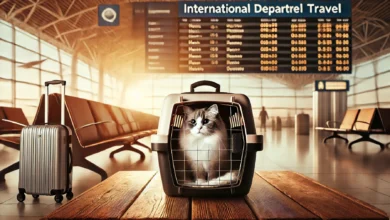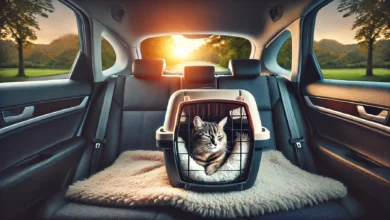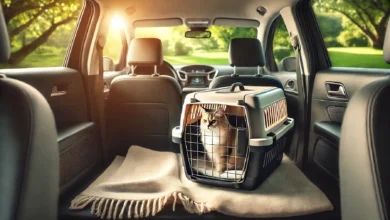How to Prepare Cat Travel Documents
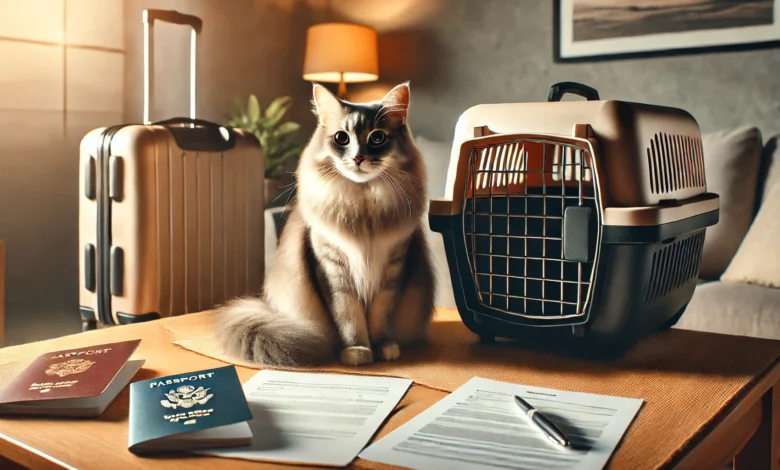
Traveling with a cat can be a great experience, but it involves proper preparation and planning.
One of the most important steps is having all the necessary cat travel documents for your feline companion.
These documents ensure a smooth experience during travel and guarantee that your cat meets the legal requirements of both your country of departure and your destination.
Whether it’s for a short domestic trip or an international one, understanding and preparing the right cat travel documents will save you time, stress, and possibly many complications with customs or airports.
In this article, we will take a closer look at how to prepare cat travel documents, from health certificates to airline-specific requirements.
We’ll guide you through each step so that your cat will be ready for traveling.
Let’s dive into the first essential aspect: understanding the cat travel documents you’ll need.
Table of Contents
Understanding Essential Cat Travel Documents
Before you begin making travel arrangements for your cat, it is essential to know what documents you will need.
These depend on whether you are traveling domestically or internationally, and they play a crucial role in ensuring your pet gains problem-free entry into foreign countries or states.
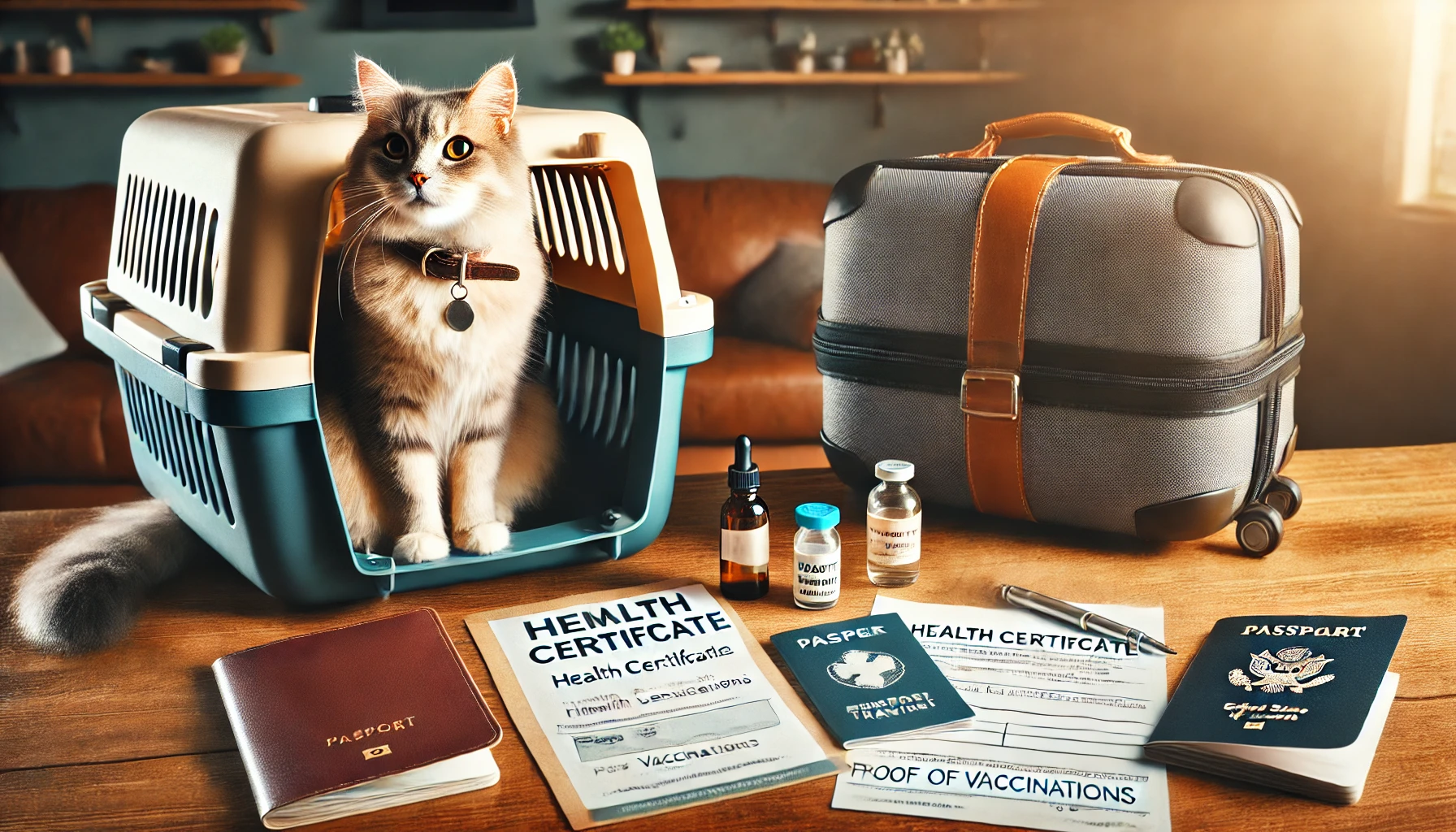
What Documents Are Required for Traveling Domestically?
In general, domestic travel requires minimal documents, but this depends on the specific regulations of your destination.
Some states or regions may have stricter laws regarding pets.
You will mainly need:
- An official health certificate from your vet, stating that your cat is healthy and fit for travel.
- Proof of vaccinations, with special emphasis on rabies.
- An airline-approved pet travel carrier if you are flying.
Even on road trips, it is a good idea to bring a copy of your cat’s health certificate and vaccination records in case of an emergency.
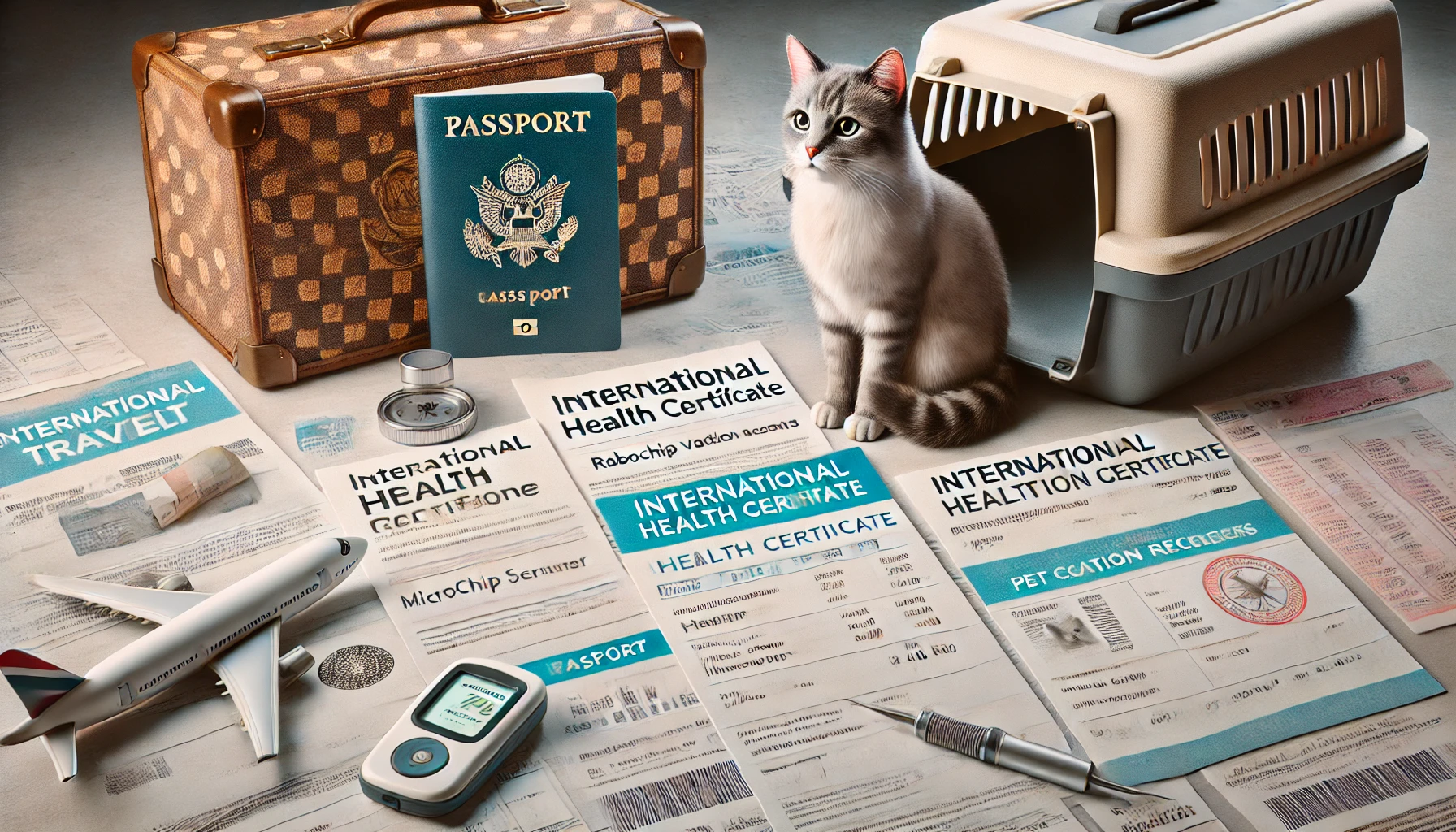
What Documents Does a Cat Need to Travel Internationally?
International travel with a cat requires more documentation and preparation than domestic travel.
It is important to find out exactly what documents are required by your destination country.
Here are the most common documents you will need:
- An international health certificate from your veterinarian, often signed and endorsed by the USDA if you are traveling from the United States.
- Rabies vaccination certificates, typically required within a specific timeframe, such as within 30 days to a year before travel.
- Microchip information, which may be requested by some countries to ensure identification of your pet.
- Specific import permits, which are required by some countries for animals to cross their borders.
Having these documents prepared well in advance will help prevent issues such as quarantine or denial of entry at your destination.
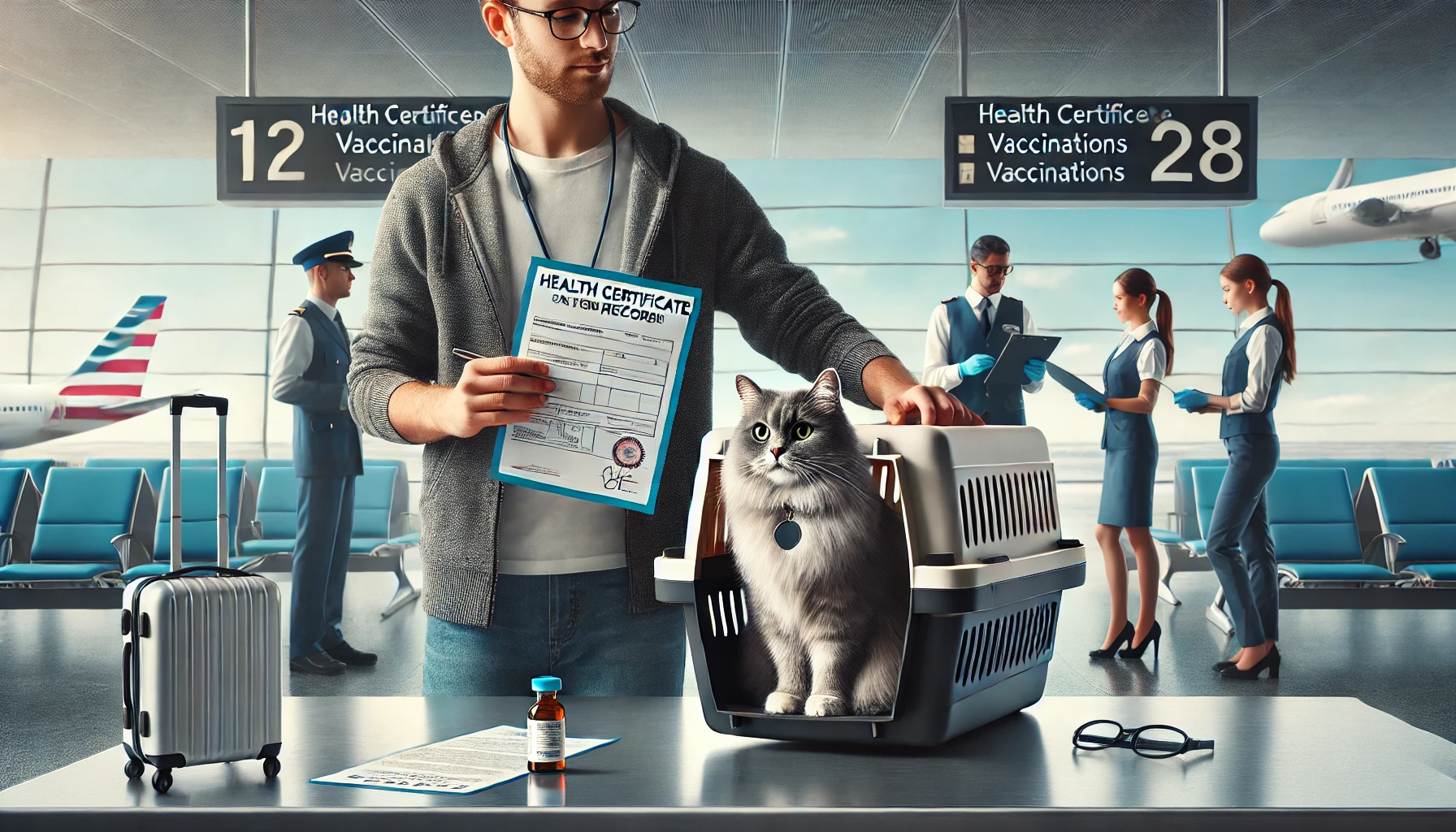
Why Cats Need Travel Documents
Cat travel documents are not just bureaucratic barriers but are designed to protect your cat and other animals.
These documents ensure that your cat is healthy, up-to-date on vaccinations, and does not pose a risk of spreading diseases.
They will also make it easier to reunite with your cat if something goes wrong during the journey.
Whether you are flying or driving, having the proper cat travel documents can make all the difference between a smooth trip and a stressful situation.
Knowing the essential documents for your cat’s travel will help ensure a smooth experience, whether domestically or internationally.
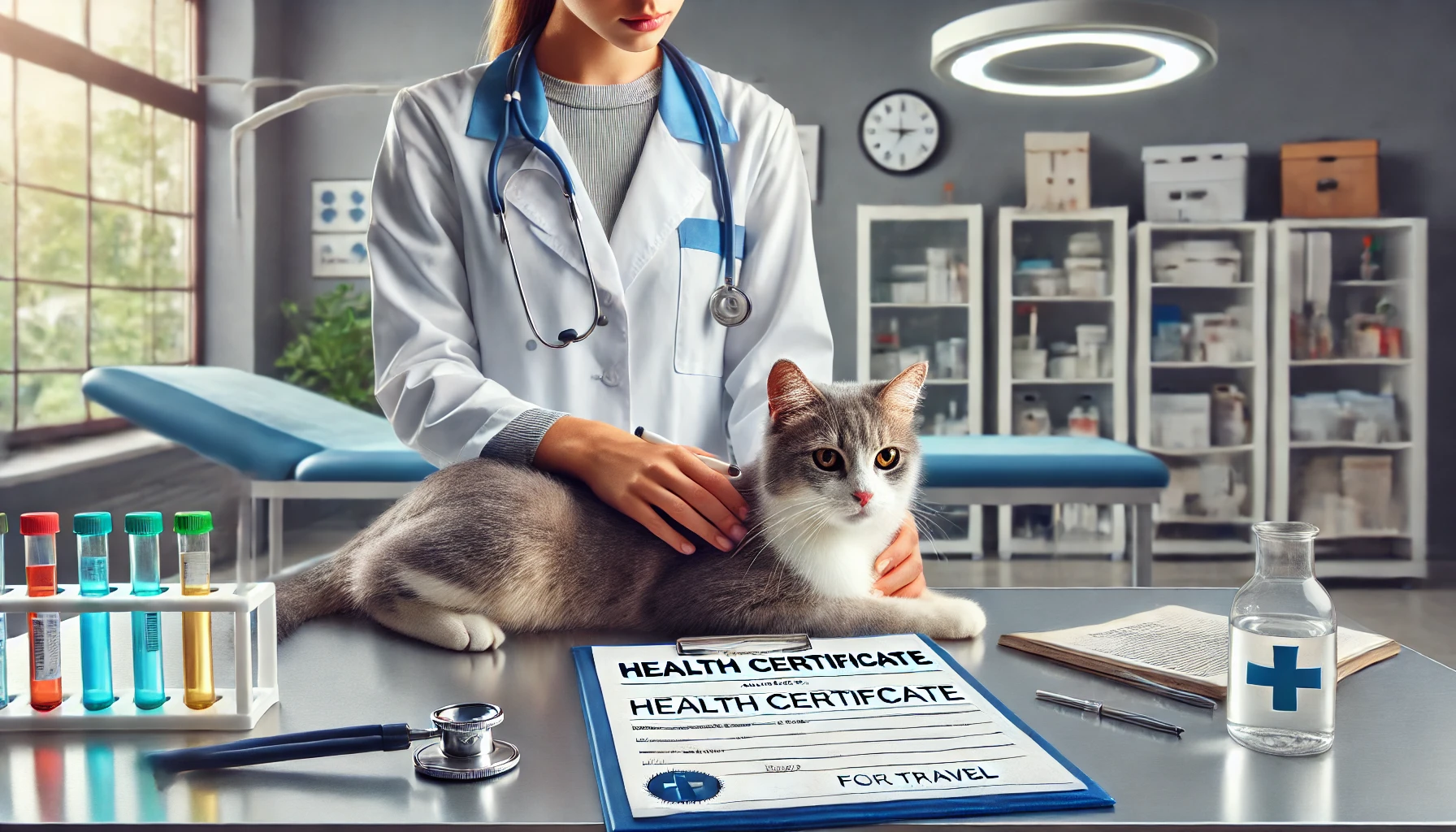
Obtaining a Health Certificate for Your Cat
One of the most significant cat travel documents is the health certificate.
This document proves that your cat is healthy and fit to travel, and it is a requirement for most airlines, countries, and even some states.
The process of obtaining a health certificate is relatively simple, but it is critical to understand what’s required and when to get it.
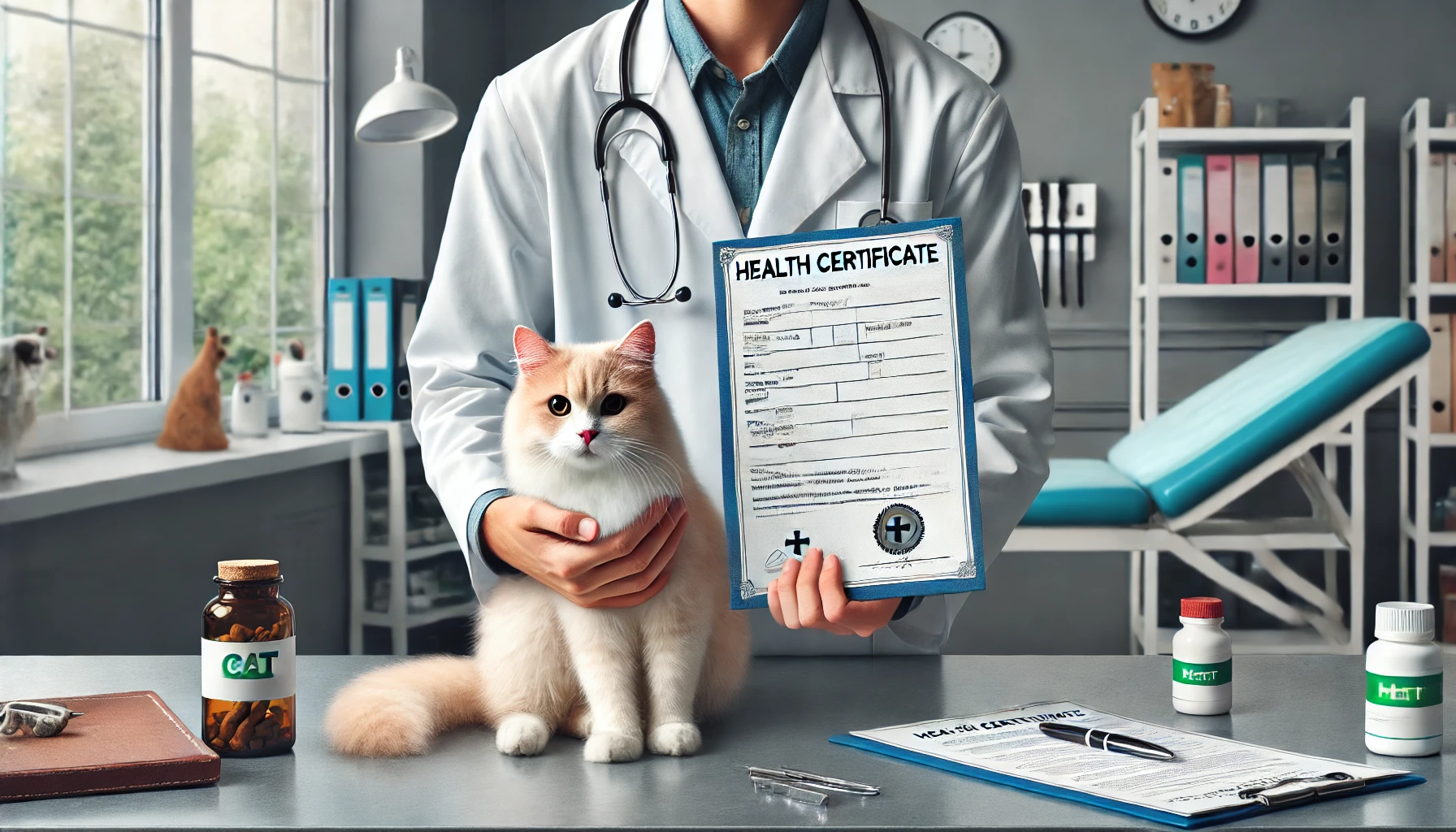
What Is a Cat Health Certificate?
A cat health certificate is an official document provided by a licensed veterinarian, stating that your cat is healthy, infection-free, and fit to travel.
It may also include proof of vaccinations, especially against rabies, which is usually required for both domestic and international travel.
Depending on your destination country, the certificate may also need to be endorsed by a government agency, like the USDA in the United States.

How to Obtain a Health Certificate for Your Cat
To obtain a health certificate for your cat, the first step is to schedule an appointment with a veterinarian.
During the visit, the vet will give your cat a thorough check-up for any signs of illness or injury.
Be sure to bring along your cat’s vaccination records, as the vet will need to confirm that your cat is up-to-date on all required vaccinations.
- Schedule the vet appointment within the time frame required by the airline or destination, usually 10 to 14 days before travel.
- Ensure your cat’s vaccinations, especially rabies, are up-to-date and properly documented.
- Some countries require additional tests or treatments for tapeworms, so always check specific destination requirements with your vet.
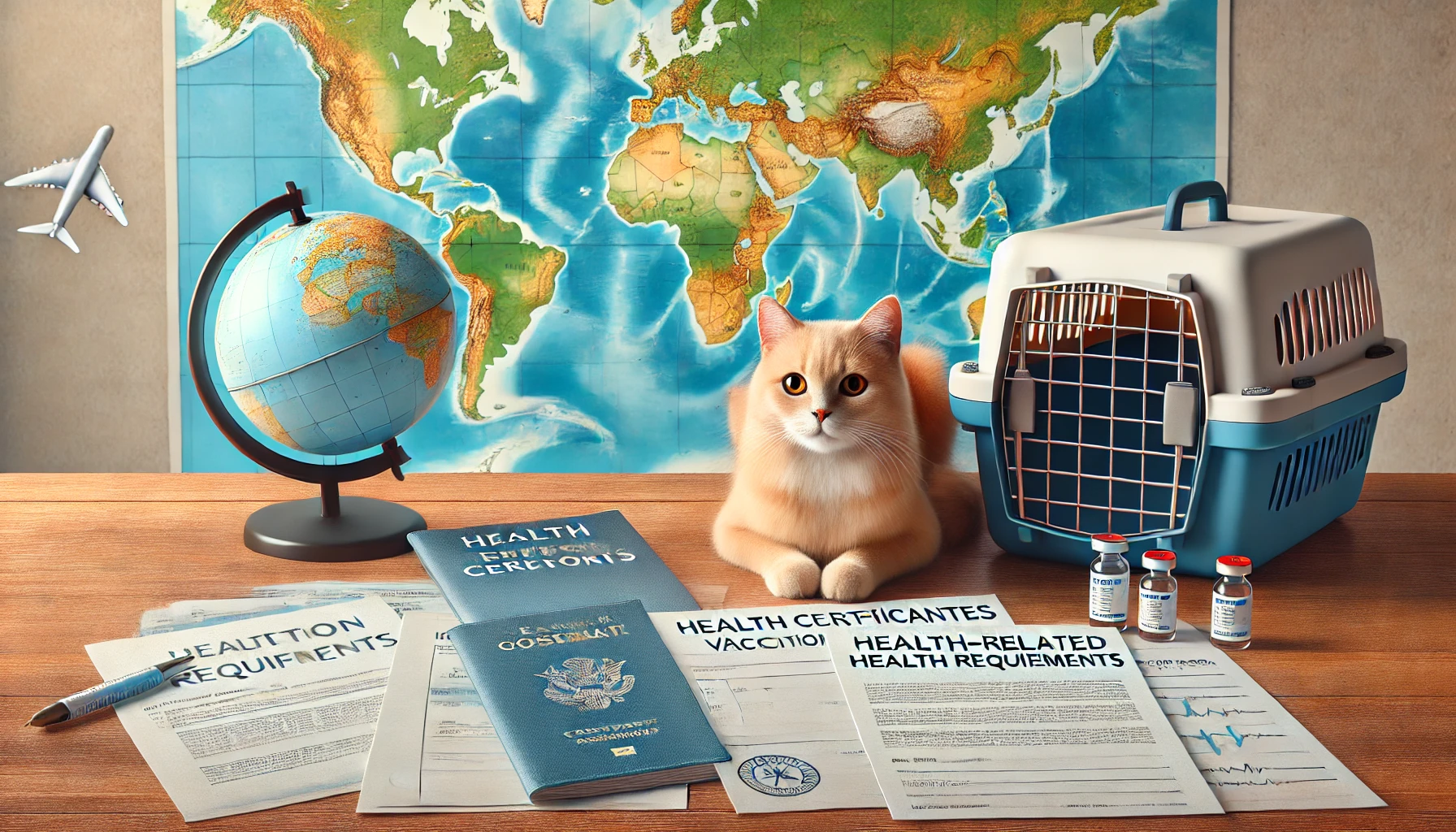
Health Requirements for Different Destinations
Health requirements for traveling pets vary by country.
For example, the European Union requires cats to have a valid rabies vaccination and an ISO-compliant microchip to enter its region.
Other countries, such as Australia and New Zealand, have stricter quarantine and vaccination requirements, which may include the need for import permits.
It’s highly recommended to research destination-specific health and vaccination requirements well in advance, as this can save you from potential travel disruptions.
Information is often available on government or embassy websites.
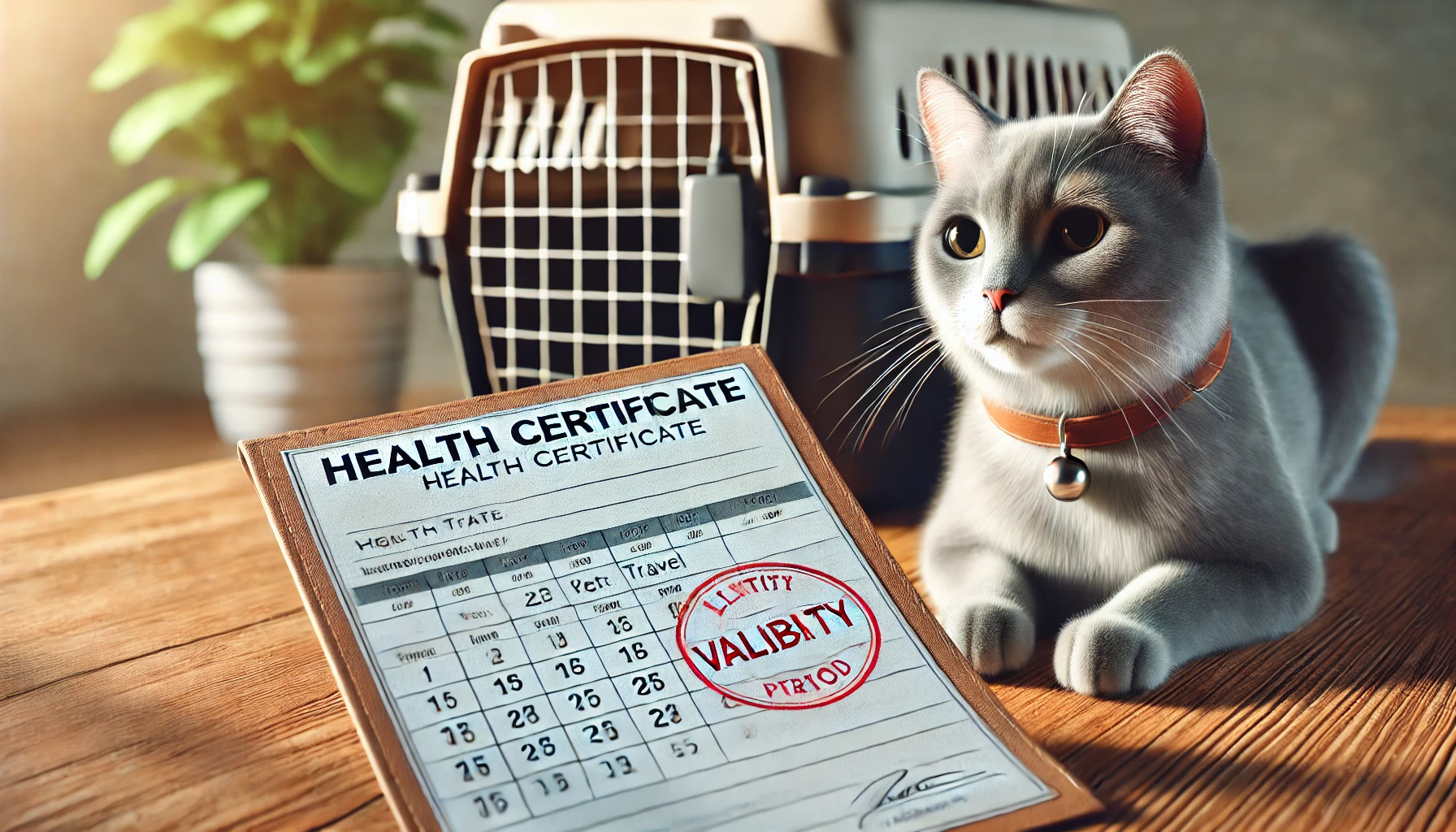
How Long Is the Health Certificate Valid?
Most health certificates are valid for a limited period, typically between 10 to 30 days, depending on the destination.
For international travel, the certificate generally needs to be issued within 10 days of departure.
Be sure to confirm the exact requirements with both your airline and destination to avoid last-minute issues.
If your trip is extended, you may need to obtain a new health certificate to ensure it remains valid when you return.
The health certificate is a mandatory document for most travel situations. Schedule a vet appointment well in advance to meet all requirements.
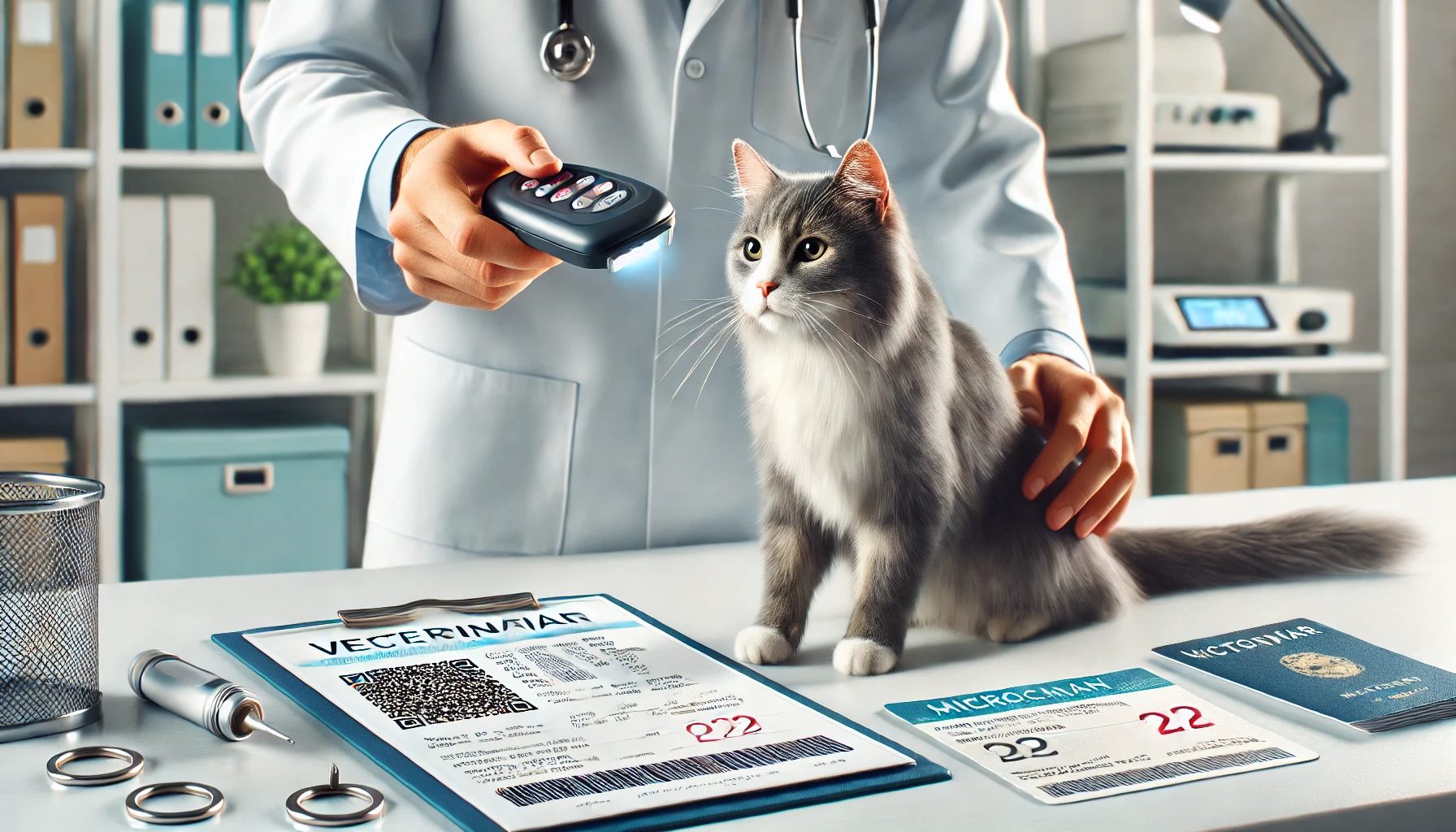
Microchip and Identification: Major Requirements
One of the main aspects of preparing your cat’s travel documents is ensuring proper identification, usually in the form of a microchip.
A microchip is a small device, about the size of a grain of rice, implanted under your cat’s skin.
It contains an identifying number unique to your cat, which can be scanned by vets, shelters, and authorities to access your contact information.
This ensures your cat can be returned to you if it gets lost.
Many countries and airlines now require microchips as a mandatory part of cat travel documents.
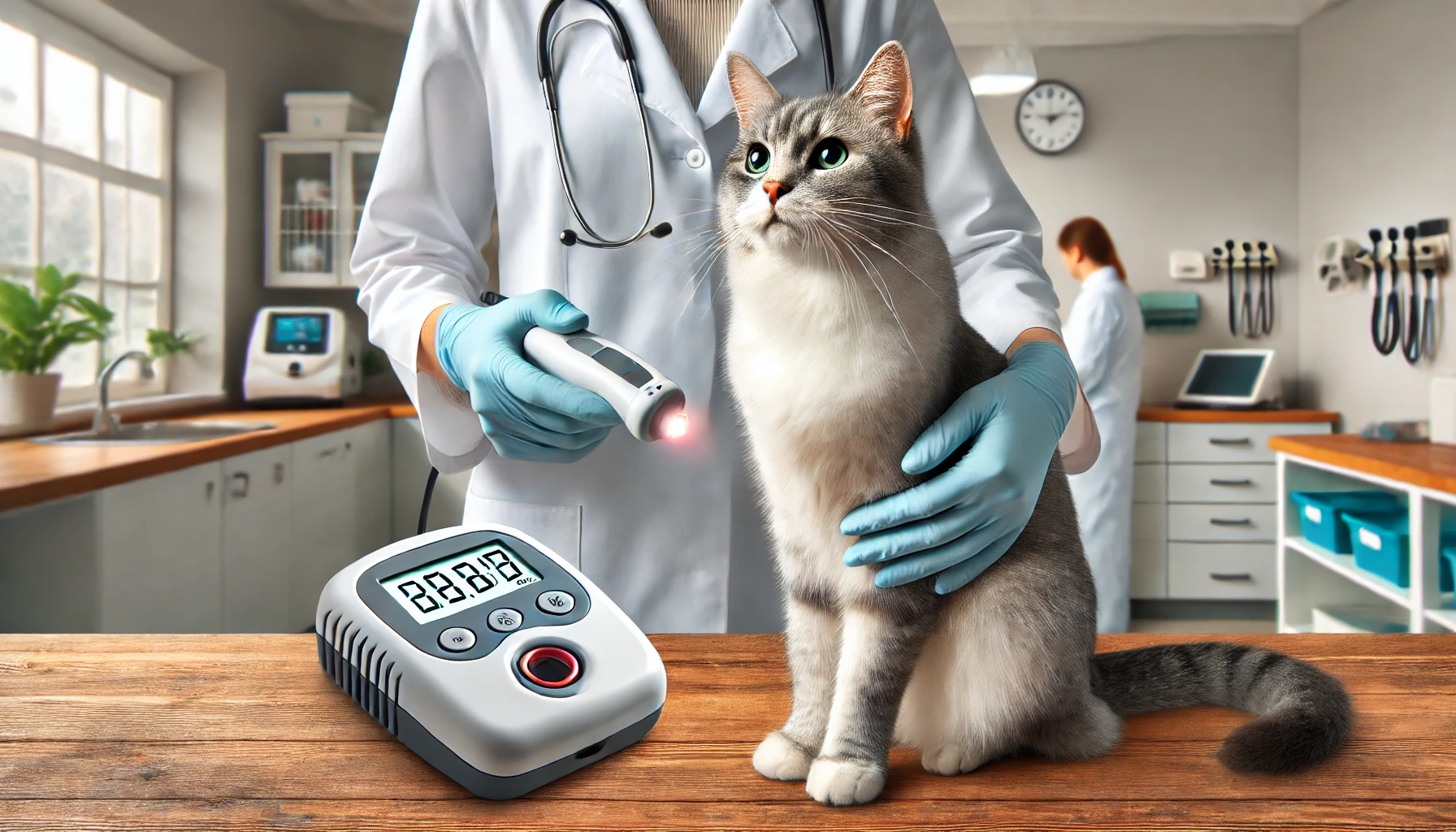
Microchip Importance for Cat Travel
Microchipping your cat is a requirement in many countries, but it is also an essential safety measure.
Whether traveling domestically or internationally, a microchip helps track your cat in case it gets lost during transport.
It’s also important to note that some countries, particularly those in Europe, require ISO-compliant microchips, which are readable by international scanners.
If your cat is already microchipped, make sure to check with your veterinarian to confirm that it meets the requirements of the country you’re visiting.
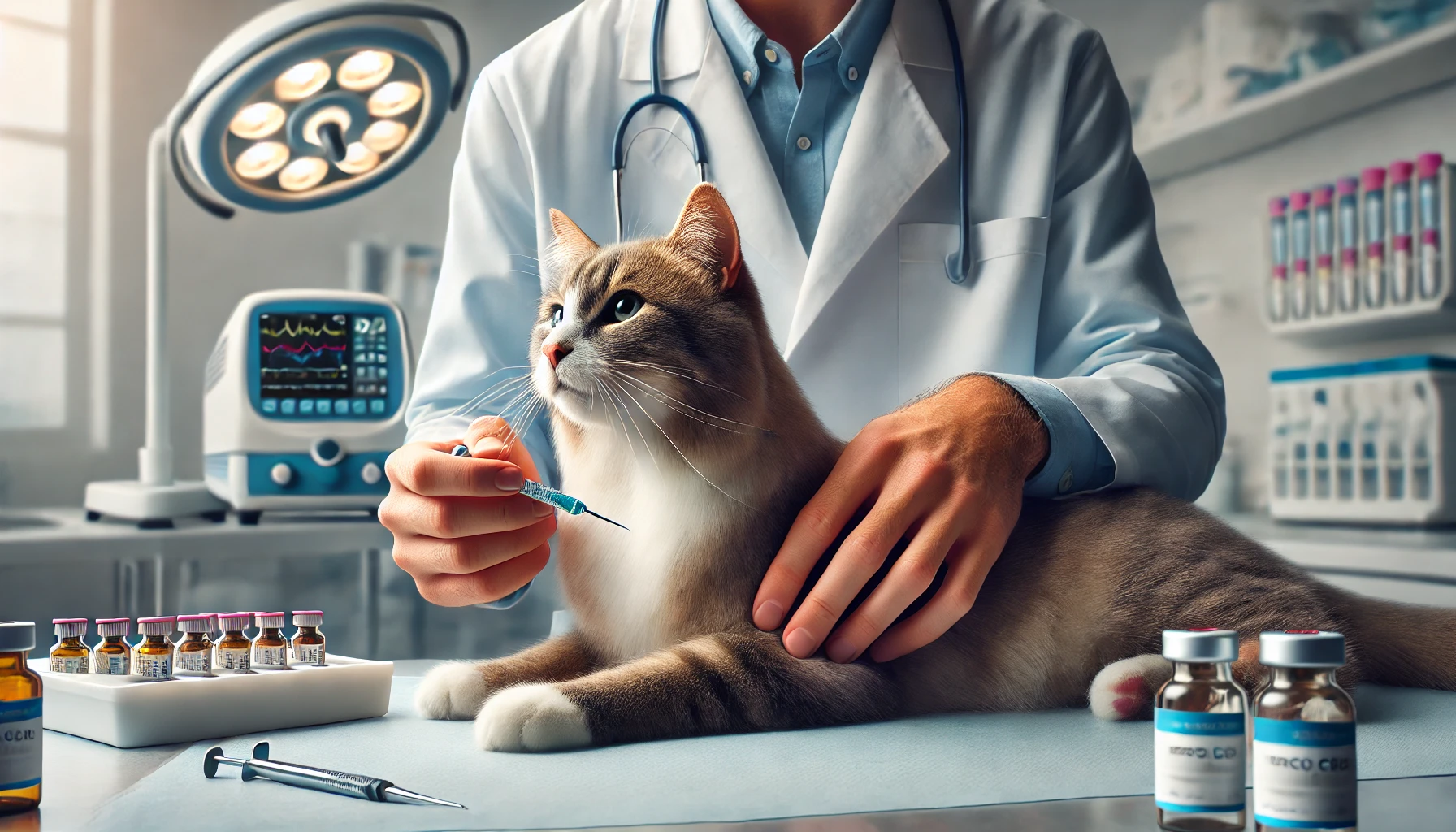
How to Get Your Cat Microchipped
Getting your cat microchipped is relatively easy.
Most veterinarians offer microchipping services, and the procedure involves inserting the tiny chip beneath your cat’s skin, typically between the shoulder blades.
The entire procedure is quick, minimally invasive, and can be performed during a routine veterinary visit.
After implantation, you must register the microchip with your contact information in a pet recovery database.
This registration is crucial, as the chip alone does not track your pet—only the registered information can help reunite you with your cat if she gets lost.
- Use an ISO-compliant microchip if your travels include international destinations.
- Check that your cat’s microchip information is up-to-date in the registry before traveling.
- Have your vet provide the microchip identification number to include with your cat’s travel documents.
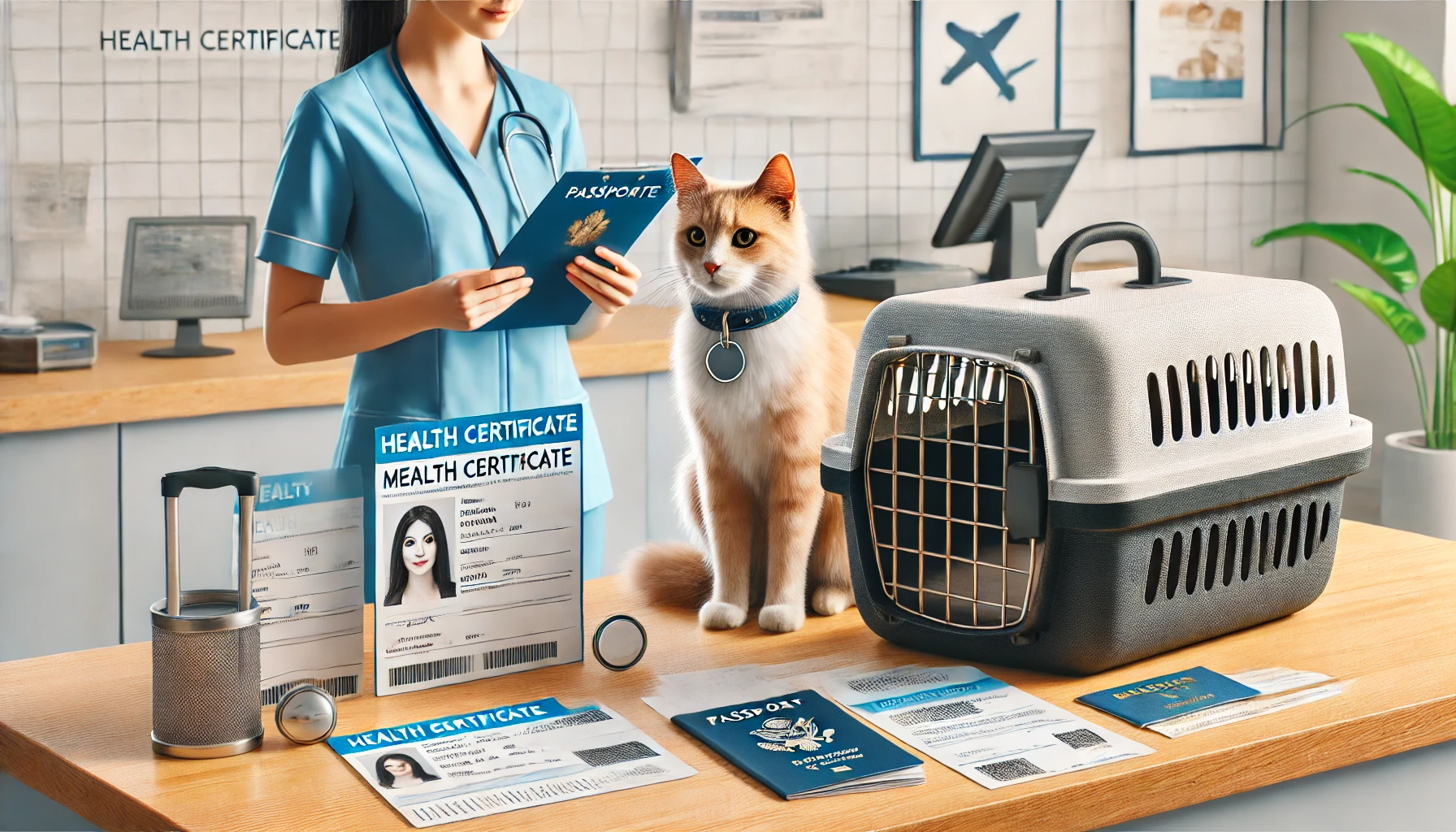
Ensuring Your Cat’s ID Matches the Travel Documents
All travel documents, including your cat’s health certificate and vaccination records, must match the microchip ID.
Mismatched information can result in delays or even quarantine at your destination.
If your cat is not microchipped yet, make sure to do this before obtaining the health certificate, as the microchip number must be included in the health certificate.
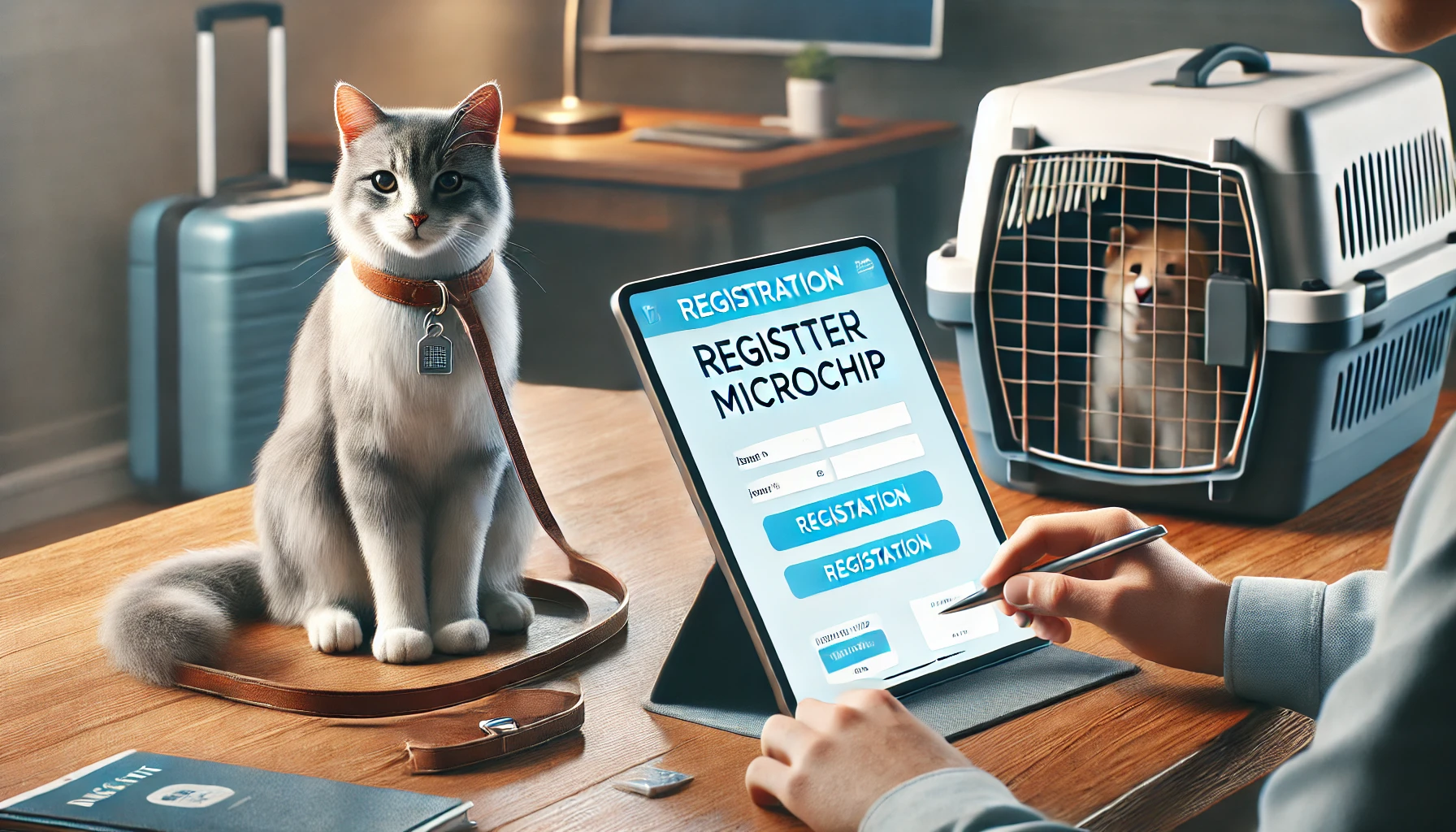
Microchip Registration for Your Cat Before You Travel
If your cat is microchipped, it’s essential to register the chip with a recognized database.
Services like HomeAgain and PetLink offer nationwide registration in the United States, while European countries and others have their own systems.
Be sure to keep your contact information up-to-date.
If you are moving or temporarily staying at a new address, update the information in the registry so that authorities can reach you, no matter where you are in the world.
Microchipping your cat ensures identification and compliance with many international travel regulations, providing peace of mind.
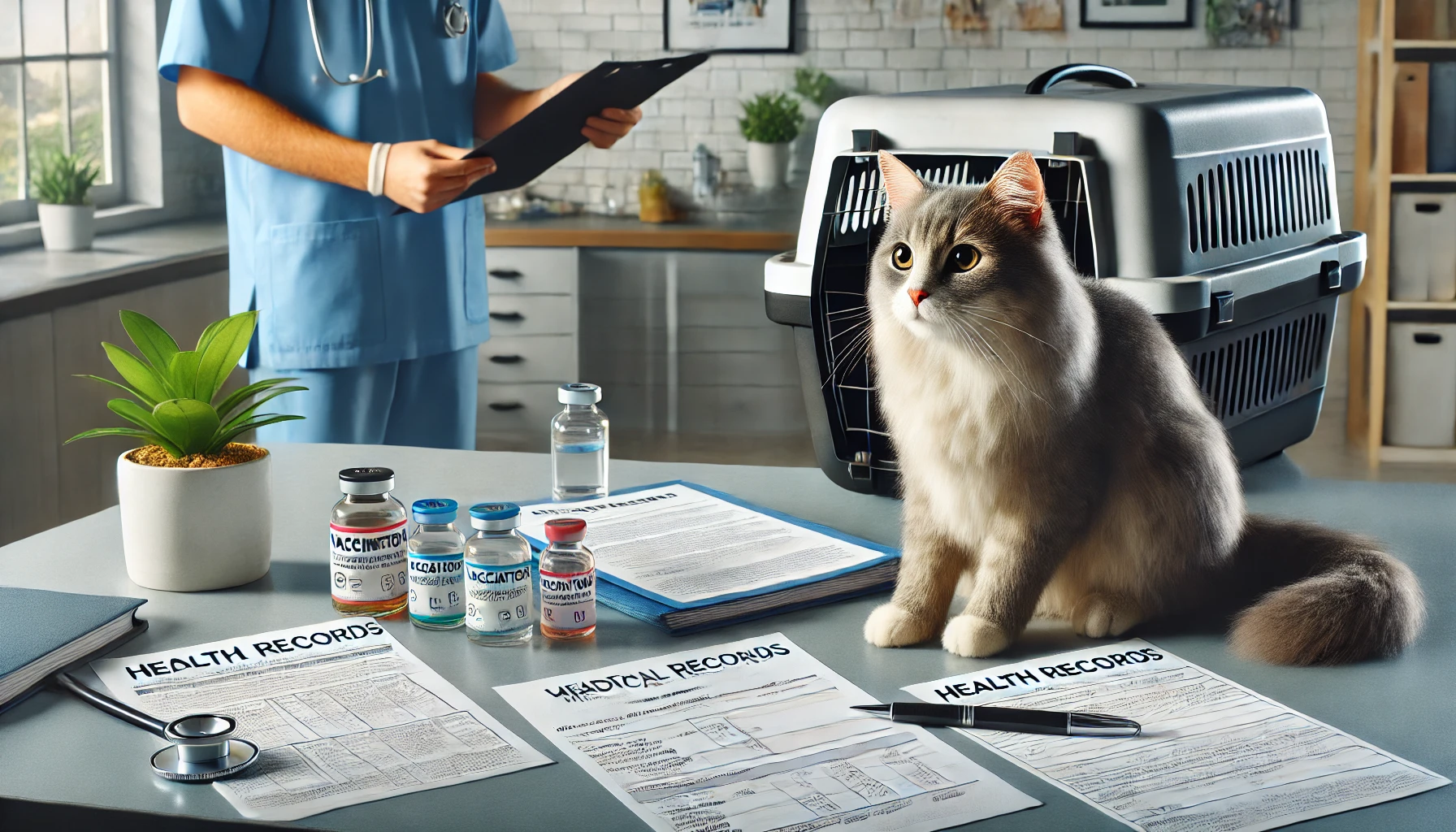
Vaccinations and Medical Records for Cat Travel
Whether you are planning a domestic or international trip with your cat, preparing him by getting the proper vaccinations and ensuring his medical records are up-to-date is crucial.
These records are important cat travel documents, proving that your cat is protected against contagious diseases and in good health.
Understanding vaccination requirements and keeping organized medical records is critical to ensure a smooth journey.
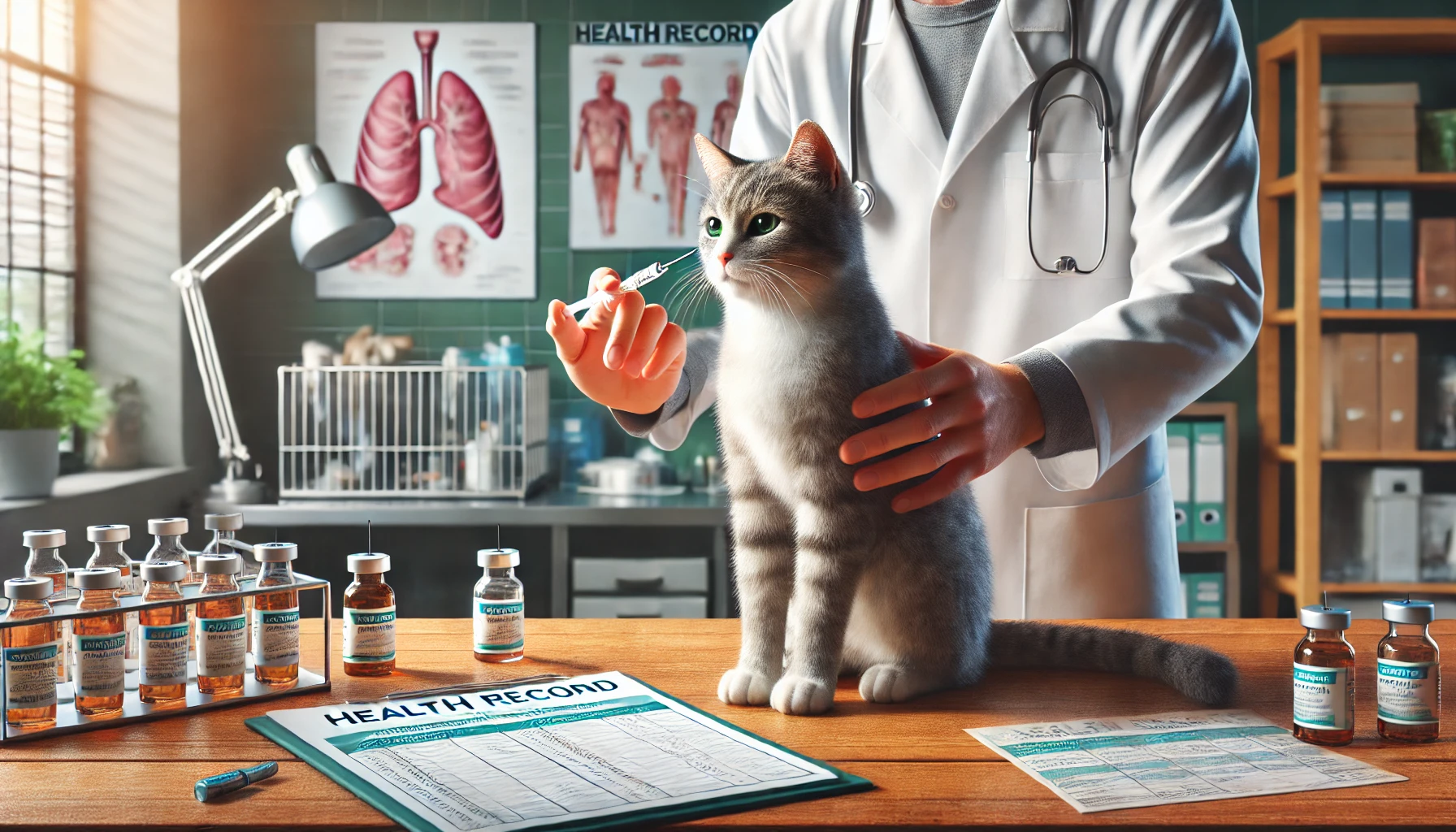
Essential Cat Vaccinations for Travel
The rabies vaccine is one of the most important and often required vaccinations for cat travel, both by airlines and destination countries.
Many countries have strict timelines, requiring that the rabies vaccine be administered 21 to 30 days before travel.
Domestically, vaccination requirements may be less stringent, but always check with your airline and destination for specifics.
In addition to rabies, other vaccinations that may be required or recommended include:
- Feline Distemper (Panleukopenia)
- Feline Calicivirus
- Feline Herpesvirus (Rhinotracheitis)
- Feline Leukemia (depending on your destination or if your cat will interact with other animals)
Some countries have specific vaccination protocols, so it’s important to research your destination in advance and consult your vet about any additional vaccines that may be required.
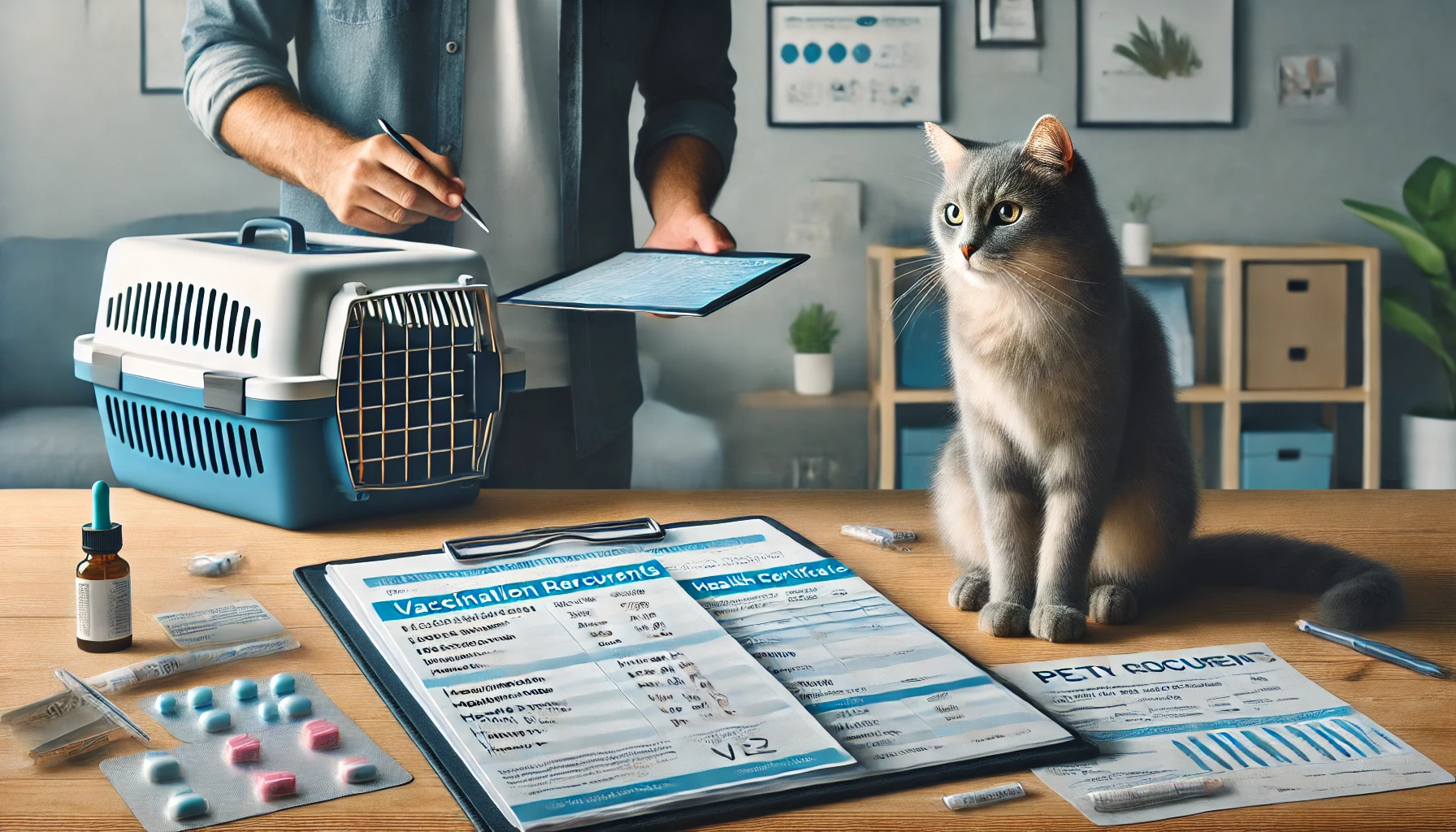
Organizing Your Cat’s Medical Records
Keeping your cat’s medical records organized is just as important as keeping them updated.
Airlines and border officials may request proof of vaccinations and health status, and having these documents readily available will save time and prevent delays.
Here are some tips for organizing your cat’s medical records for travel:
- Ensure all vaccination dates are clearly documented, especially for rabies.
- Carry a copy of your cat’s health certificate and vaccination records.
- Bring both digital and printed copies of your cat’s medical records for emergencies.
- Label vaccination documents by date to quickly validate their effectiveness.
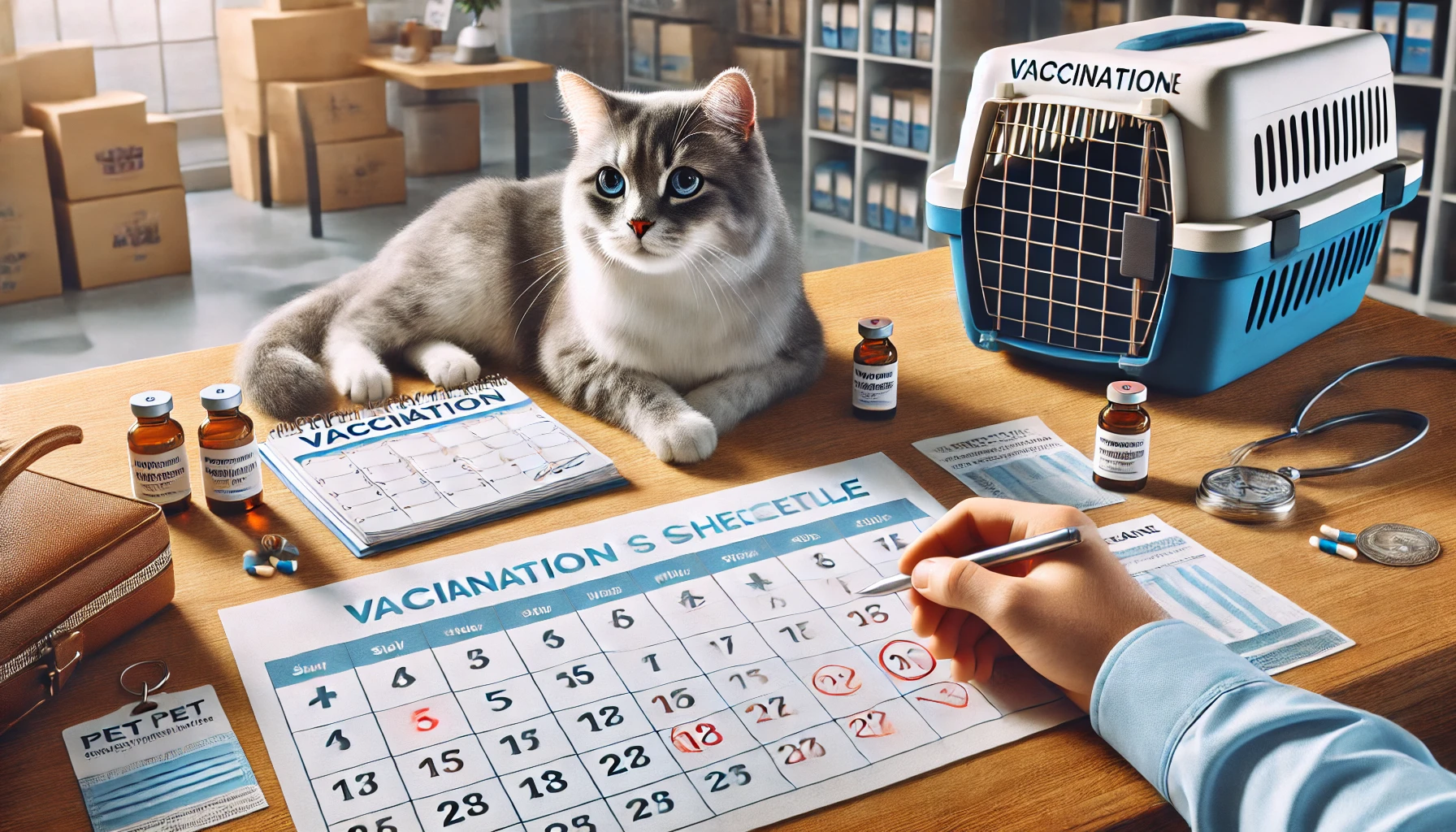
Vaccination Schedules Before Flying
As mentioned earlier, different countries have specific timelines for when vaccinations must be administered before travel.
For instance, rabies vaccinations typically need to be given between 21 days and one year before travel.
Some countries may also require additional treatments, such as for tapeworms, just days before travel.
Check the guidelines for your destination well in advance and schedule vaccinations accordingly to avoid complications.
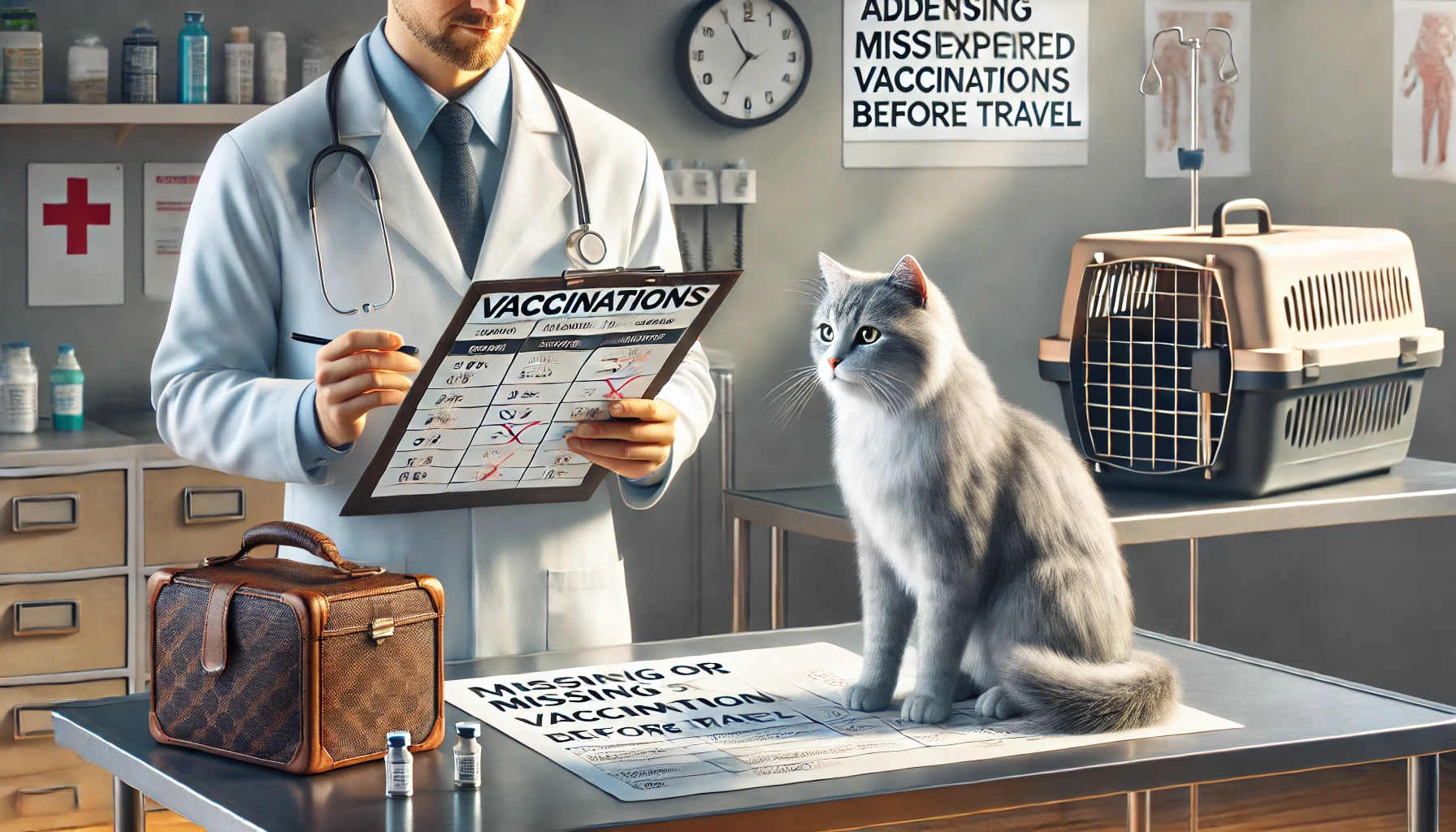
Dealing with Missing or Expired Vaccinations
If your cat is missing certain vaccinations or if they have expired, you’ll need to get them updated before traveling.
Most airlines and countries will not permit travel without up-to-date vaccinations.
Consult your vet to expedite the process, but keep in mind that some vaccines, such as rabies, need time to become valid for travel.
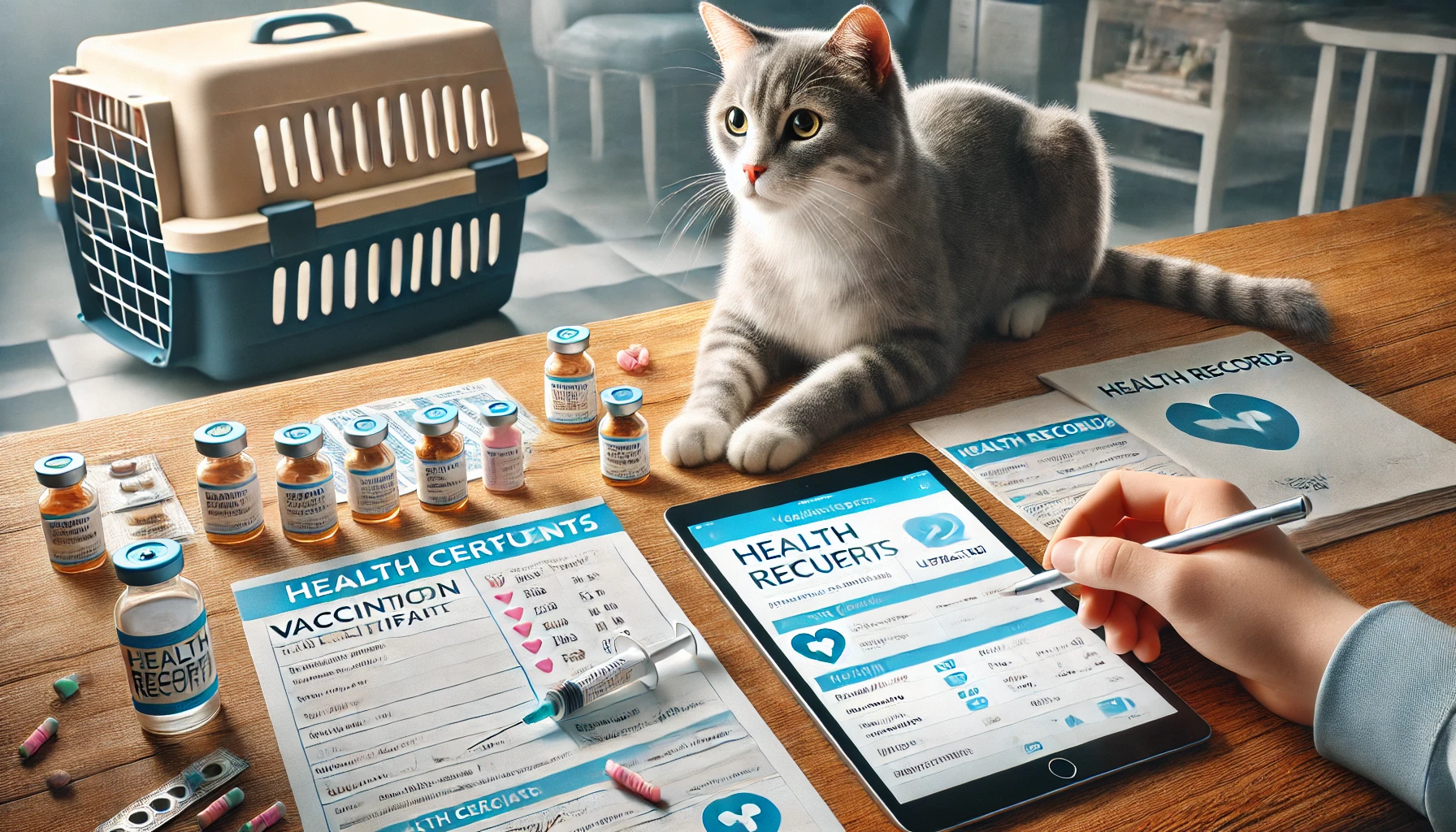
Tips to Keep Your Cat’s Health Records Updated for Travel
Keeping your cat’s health records updated is important for travel.
Here are a few ways to do this:
- Schedule regular vet visits to keep vaccinations current.
- Request updated vaccination records from your vet after each visit.
- Use a digital app or service to store and track your cat’s health records.
- Always check your cat’s records before each trip to ensure they meet destination requirements.
Keeping vaccinations and medical records up-to-date is crucial for your cat’s safety and meeting travel requirements.
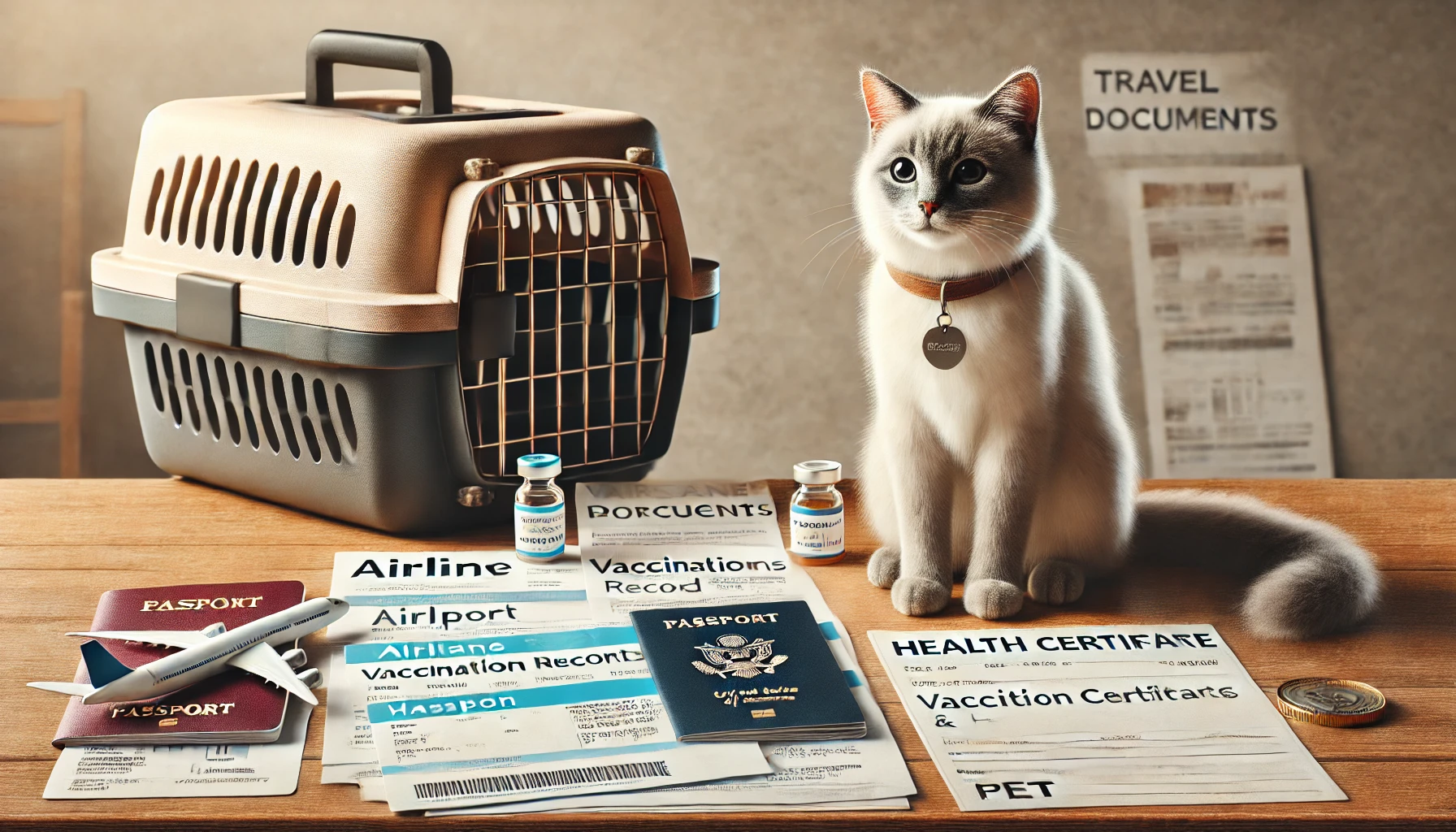
Preparing Airline and Destination-Specific Documents
When flying with a cat, it’s important to note that airlines and some destinations may have specific requirements for cat travel documents.
Proper advance preparation of these documents will ensure a smooth journey, help avoid any delays, and keep your cat comfortable throughout the trip.
Knowing the regulations beforehand—whether for domestic or international flights—will aid in presenting the best options for your travel plans.
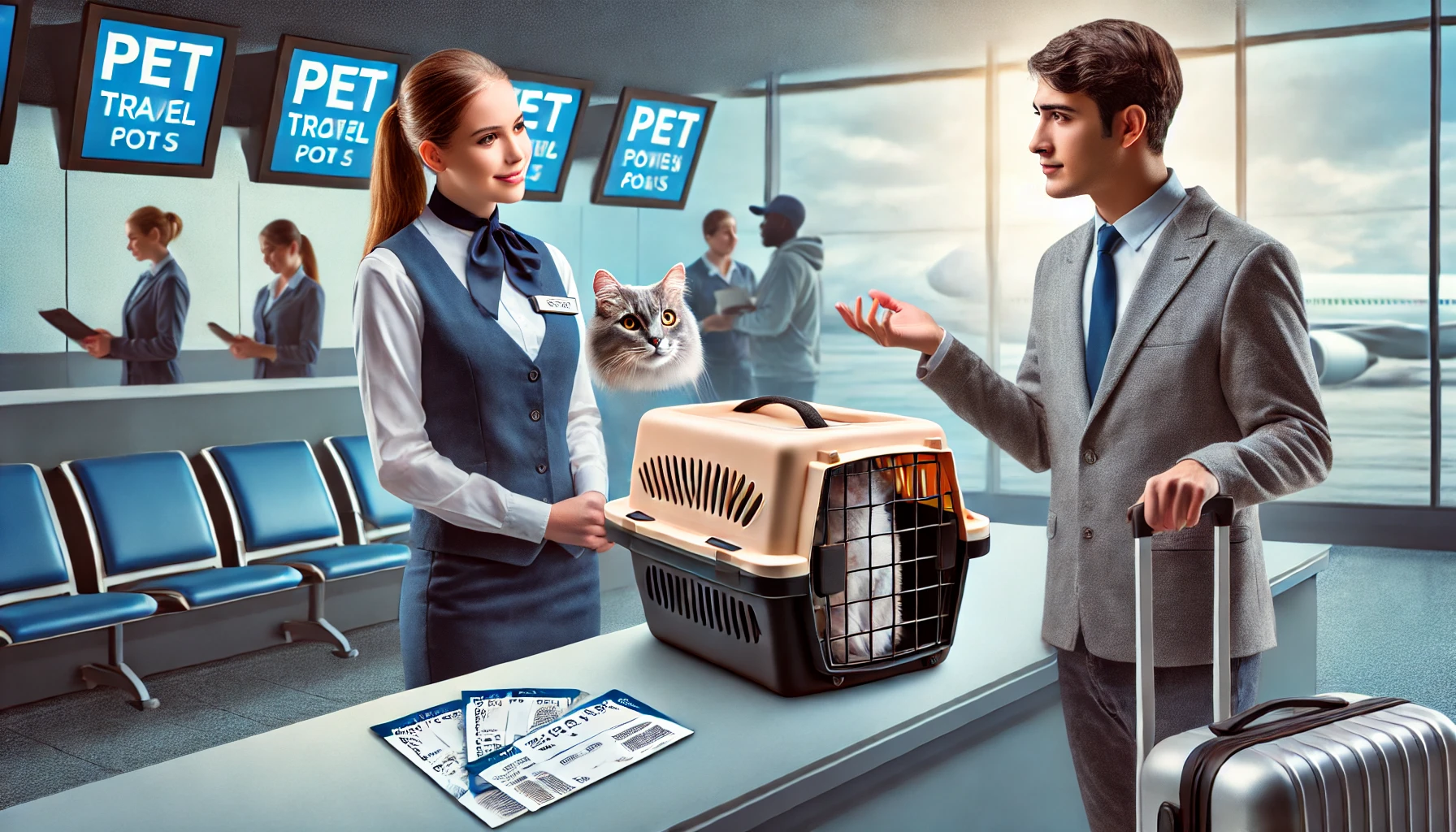
Understanding Airline Pet Travel Policies
Each airline has its own set of rules regarding pet travel, so it’s crucial to check the requirements of the particular airline you are flying with.
Some airlines allow pets to travel in the cabin, while others may require them to be placed in the cargo hold.
You’ll also need to ensure that your cat is in an airline-approved carrier that meets specific size and ventilation guidelines.
- Check with your airline to see if they allow your cat in the cabin or if they require cargo travel.
- Ensure that your pet carrier meets the airline’s size, material, and ventilation requirements.
- Check if a health certificate or vaccination record is required at check-in.
- Find out if there are any additional fees for traveling with your cat.
It’s also wise to understand your airline’s policies concerning layovers, as some airports may have additional requirements during transfers.
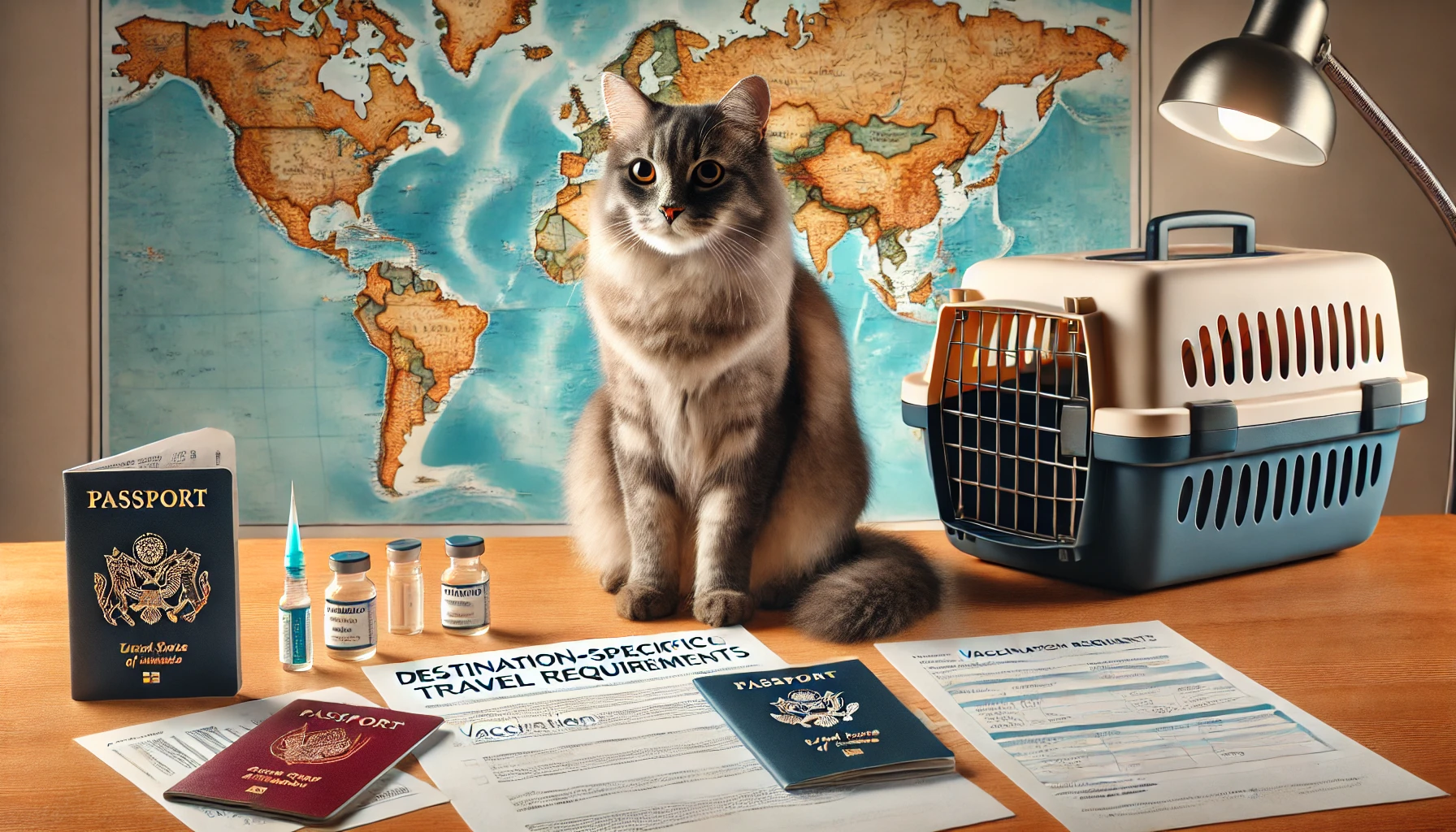
Destination-Specific Cat Travel Requirements
Different countries or regions have varying requirements for cat travel.
These may include quarantine periods, specific vaccinations, and even import permits.
For instance, countries like Australia and New Zealand have strict quarantine laws requiring cats to stay in government-approved facilities upon arrival.
Meanwhile, the European Union requires cats to have an ISO-compliant microchip and a rabies vaccination before entry.
- Research your destination’s pet travel requirements early, particularly regarding vaccinations and quarantine rules.
- Check if an import permit or additional documents are needed for entry.
- Prepare for any required quarantine periods and ensure you meet all health and vaccination standards.
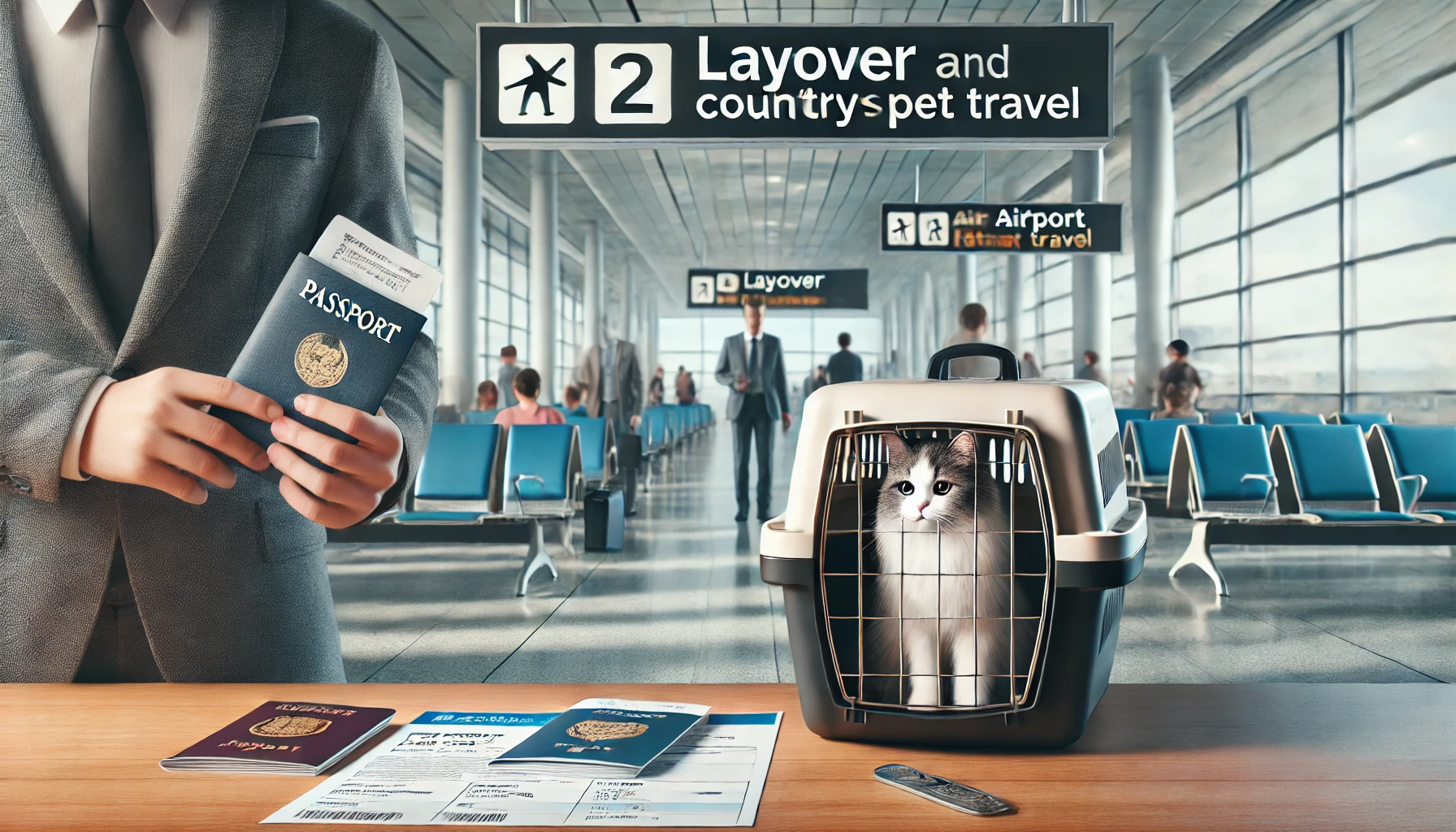
How to Handle Layovers and Country-Specific Regulations
When traveling internationally with a layover in a third country, different countries’ pet entry requirements can impact even short transits.
A layover in countries like the United Kingdom or Japan, which have strict pet entry regulations, may require special documentation or restrictions on pet movement.
Be sure to research the regulations for any countries you will transit through.
- Check the pet travel regulations for all countries involved in your journey, including layover destinations.
- Ensure your cat’s documents meet the requirements for both your final destination and any countries with stopovers.
- Prepare additional paperwork if your layover country has strict pet entry rules.
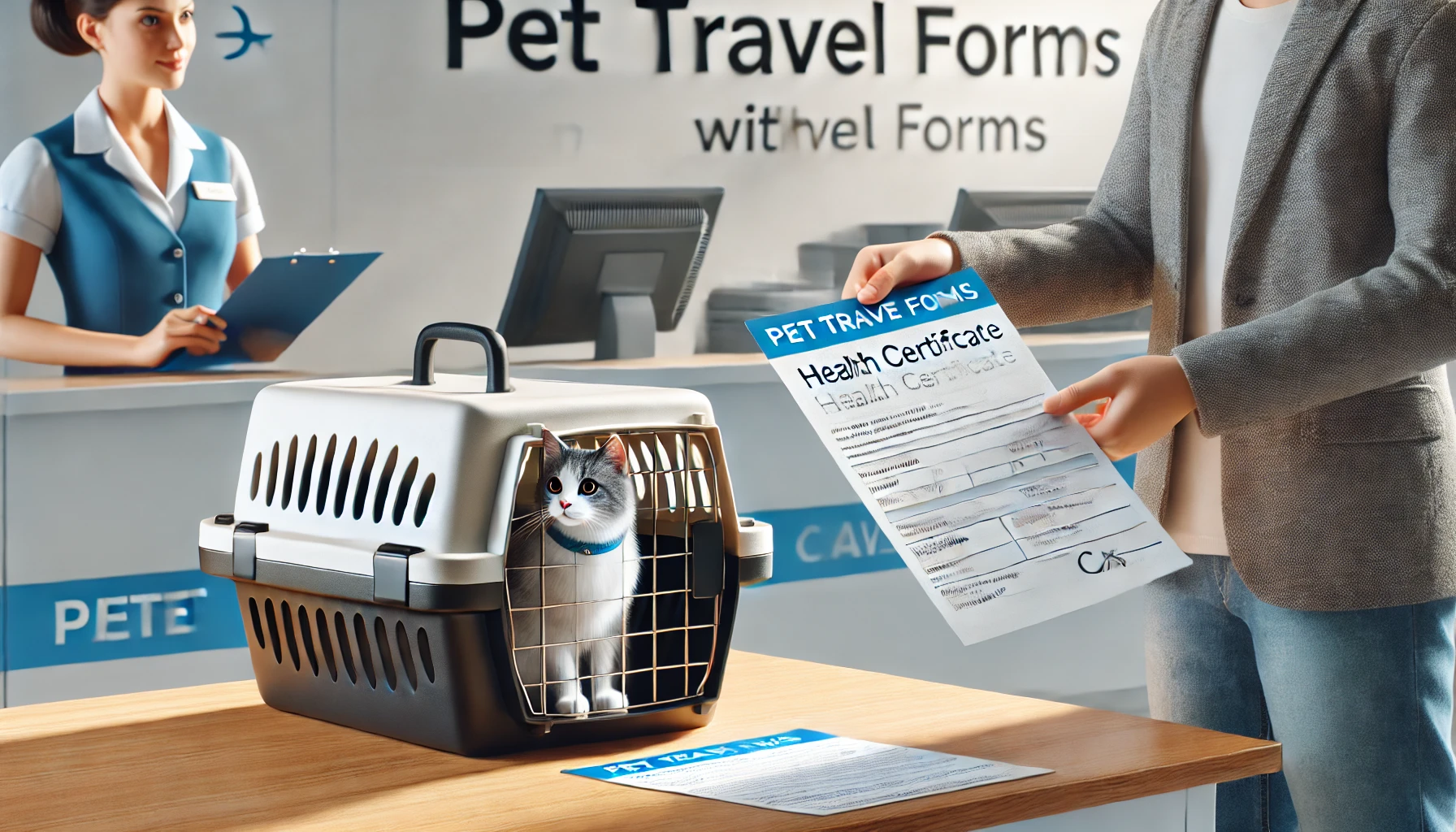
Filing Pet Travel Forms with Airlines
Many airlines require pet travel forms to be submitted in advance of your trip.
These forms often include details about your cat’s health, vaccinations, and travel arrangements.
Be sure to complete and submit these forms on time, as some airlines require them to be filed up to 72 hours before the flight.
Failure to submit the necessary forms could result in your cat being denied boarding.
- Complete the required pet travel forms as far in advance as possible before your trip.
- Submit the forms to the airline at least 48 to 72 hours before the flight.
- Keep copies of all documents to bring with you to the airport.
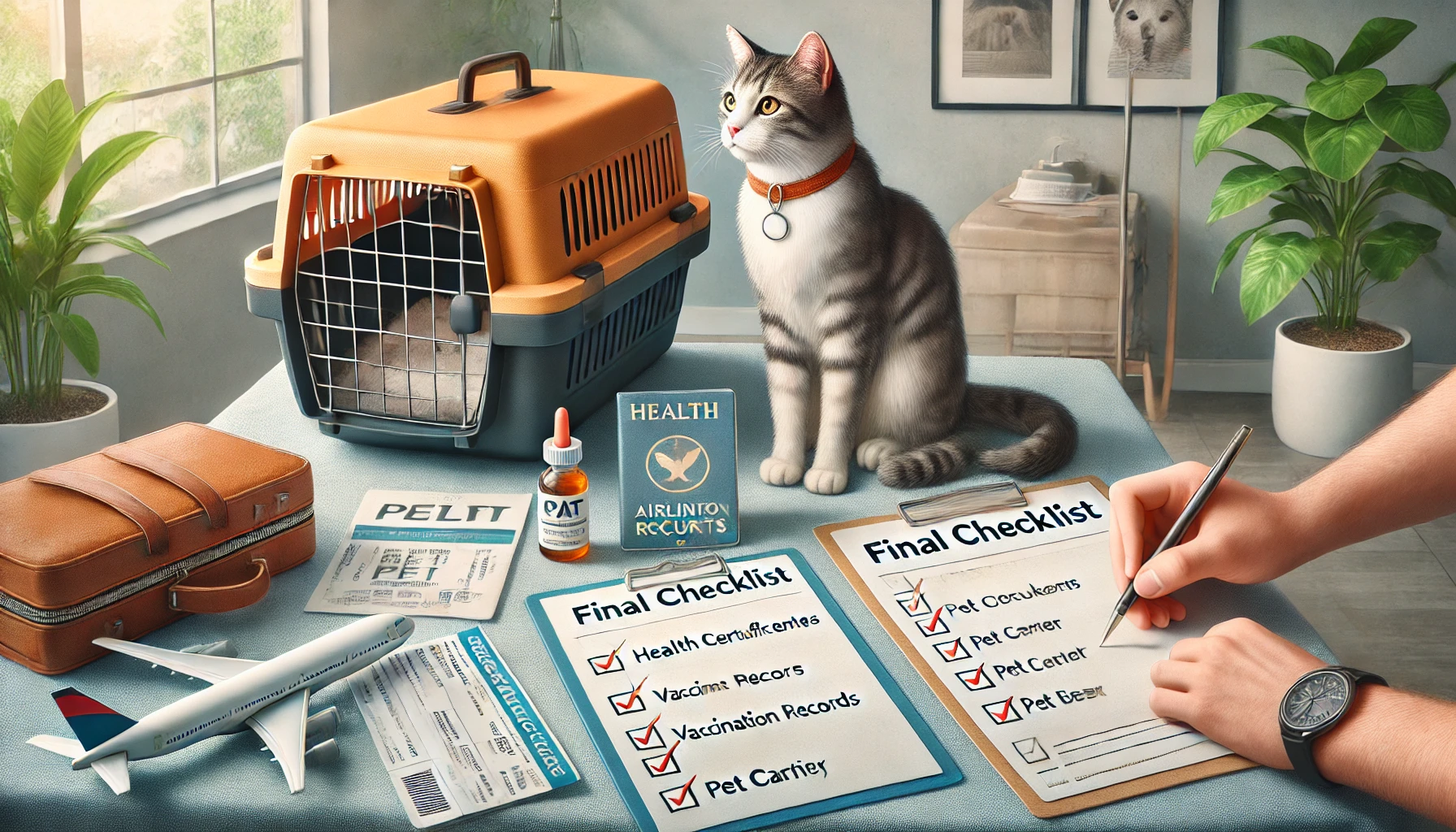
Final Checklist for Cat Travel Documents
Before embarking on your journey, double-check that you have all the required cat travel documents and that they are easily accessible.
A final checklist will ensure nothing is forgotten:
- Health certificate and vaccination records
- Microchip information
- Airline-approved pet carrier
- Destination-specific permits or documentation
- Pet travel forms submitted to the airline
Being well-prepared with the necessary documents will make the travel experience for your cat much easier and less stressful.
Airlines and destinations have specific requirements. Always check policies in advance to avoid last-minute issues.
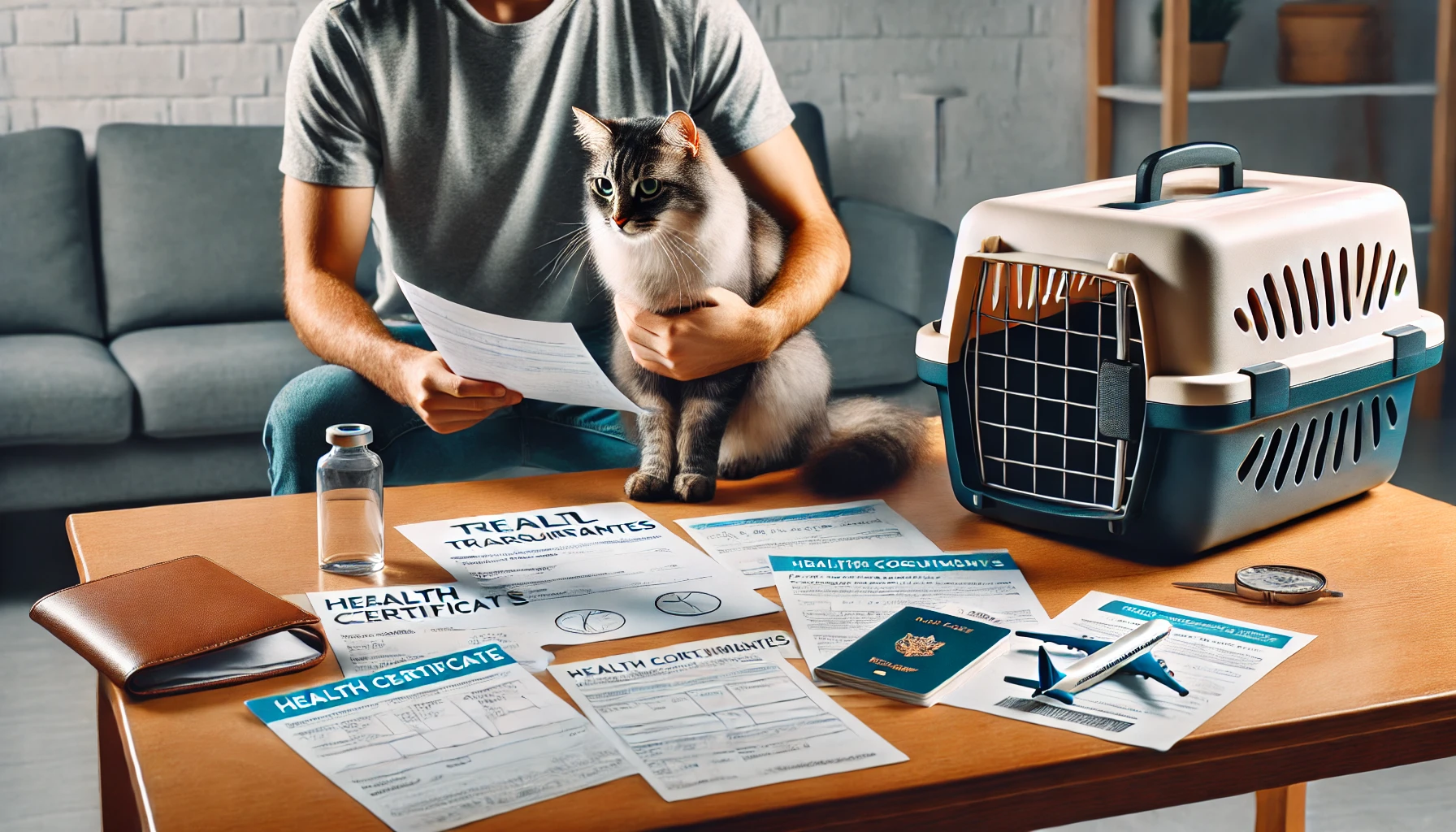
Conclusion on How to Prepare Cat Travel Documents
Health certificates, vaccinations, and microchipping are all vital cat travel documents when it comes to both the safety and legality of your feline companion.
Preparing and organizing these documents well in advance will help you avoid delays and ensure a smooth travel experience for your cat.
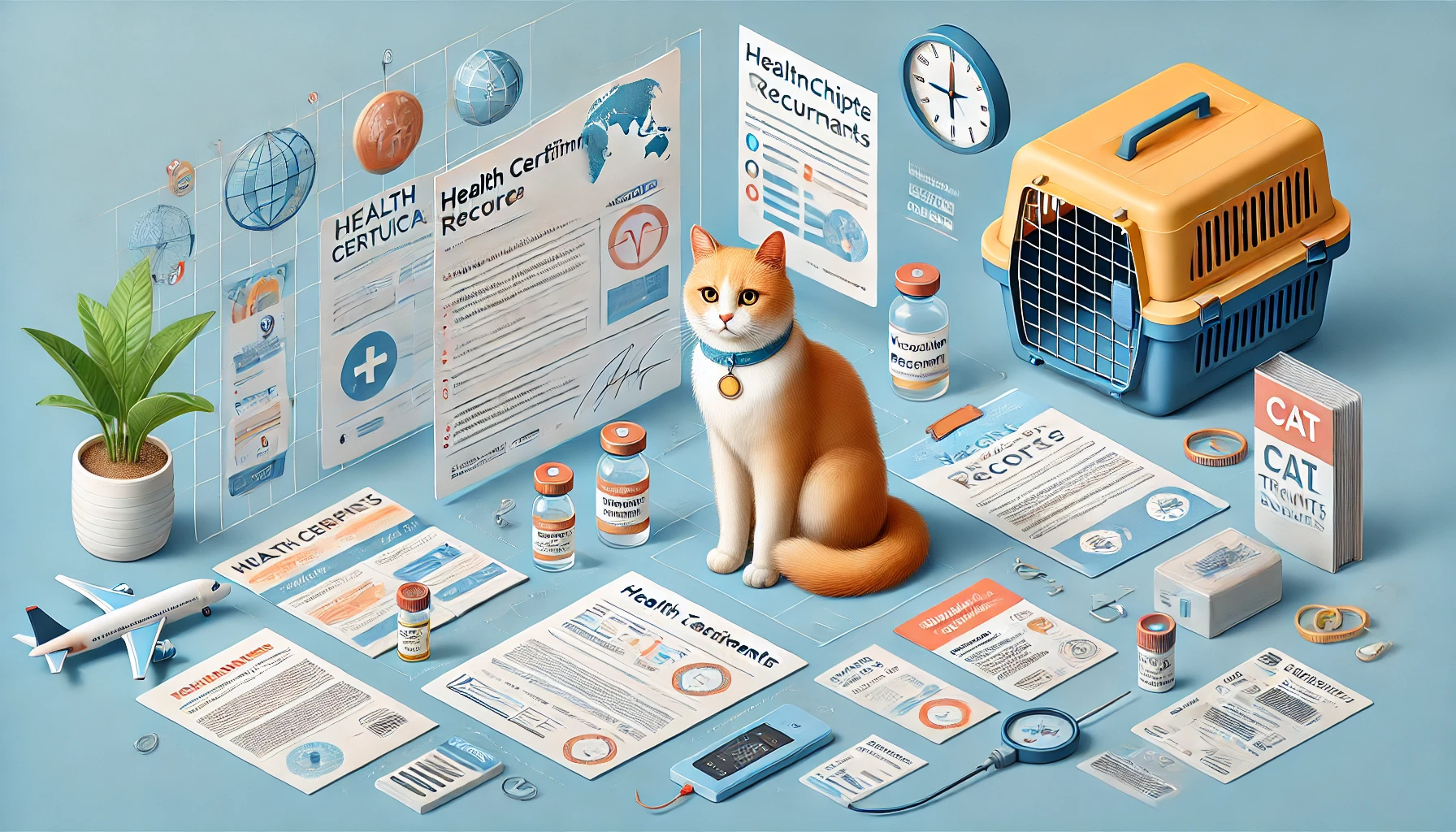
Key Takeaways for Preparing Cat Travel Documents
The following are key steps to bear in mind to ensure your cat travels with the least amount of stress possible:
- Always ensure that your cat’s health certificate is up-to-date and meets the requirements of the destination country’s health department.
- Secure all necessary vaccinations, especially the rabies vaccine, well in advance of the trip.
- Consider microchipping your cat for added safety, and ensure the information is registered correctly.
- Research any destination-specific requirements, including quarantine rules, and prepare the necessary paperwork.
- Submit all required pet travel forms to the airline and keep copies of all documents with you during travel.
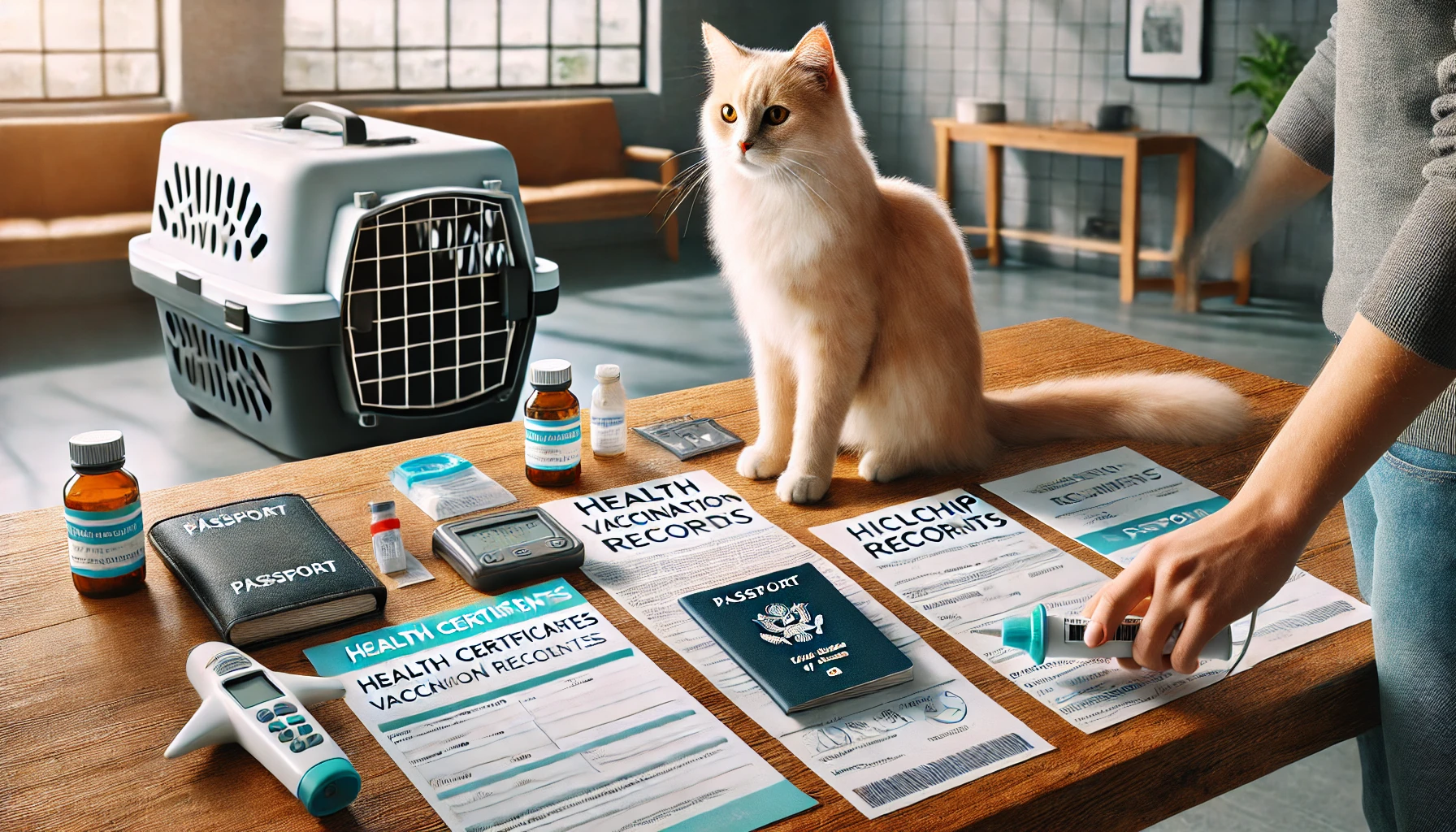
Organizing Your Cat Travel Documents
Maintaining organized cat travel documents is essential for a stress-free journey.
Be sure to carry both hard and digital copies of your cat’s health certificate, vaccination records, and microchip information.
Having these documents readily accessible can save you time at checkpoints and prevent unexpected issues during travel.
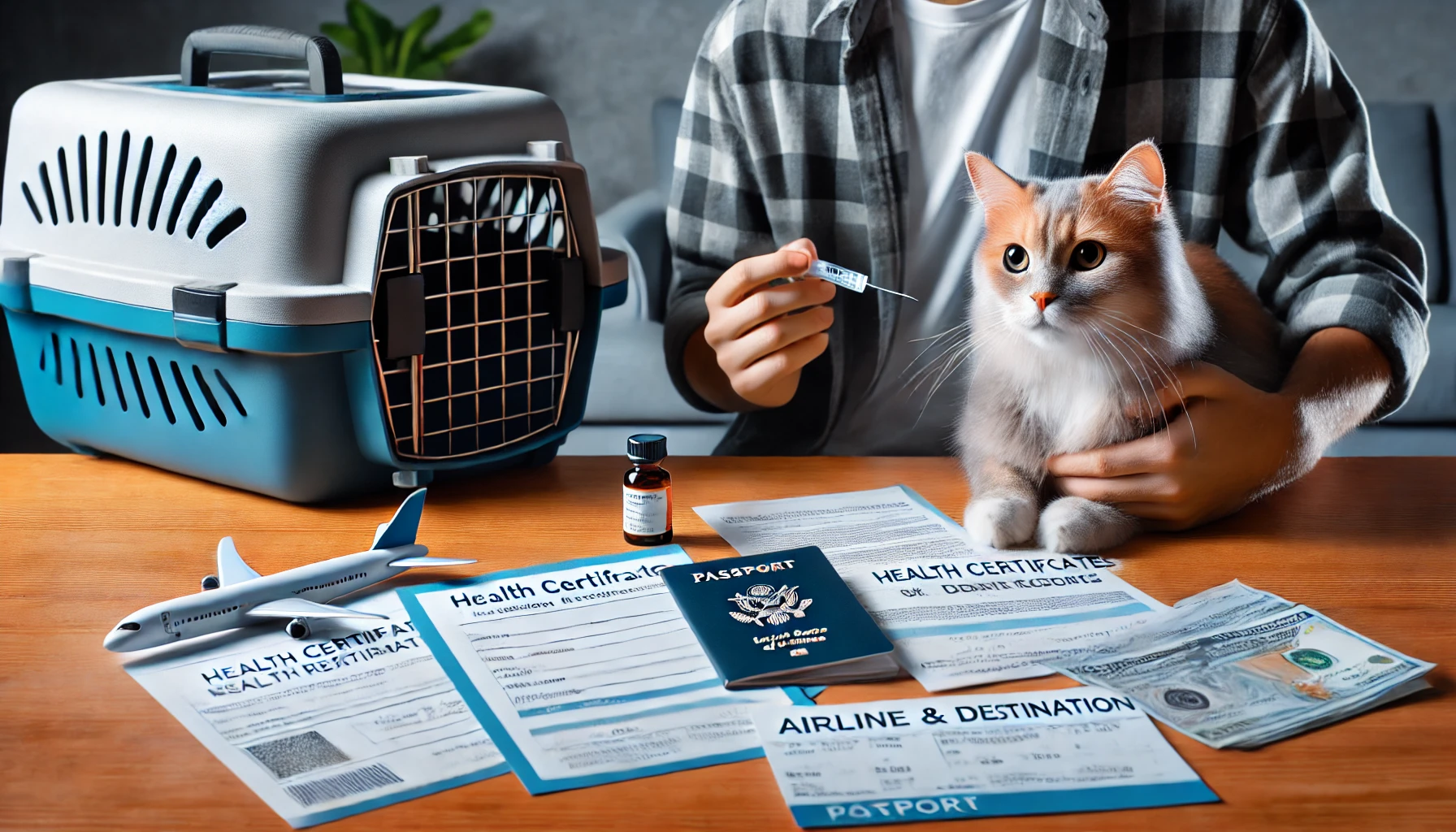
Ensuring Compliance with Airline and Destination Rules
The rules regarding cat travel may vary between airlines and destinations.
To avoid inconveniences, research these regulations in advance and prepare accordingly.
For international flights, ensure that your cat’s documents meet both airline and destination country requirements, including health certificates, vaccination records, microchip registrations, and import permits.
For domestic flights, the process may be simpler, but it’s still important to check specific requirements, such as whether your cat can travel in the cabin or cargo, and any additional forms or fees that may apply.
Following these steps will ensure a smoother travel experience for your cat.
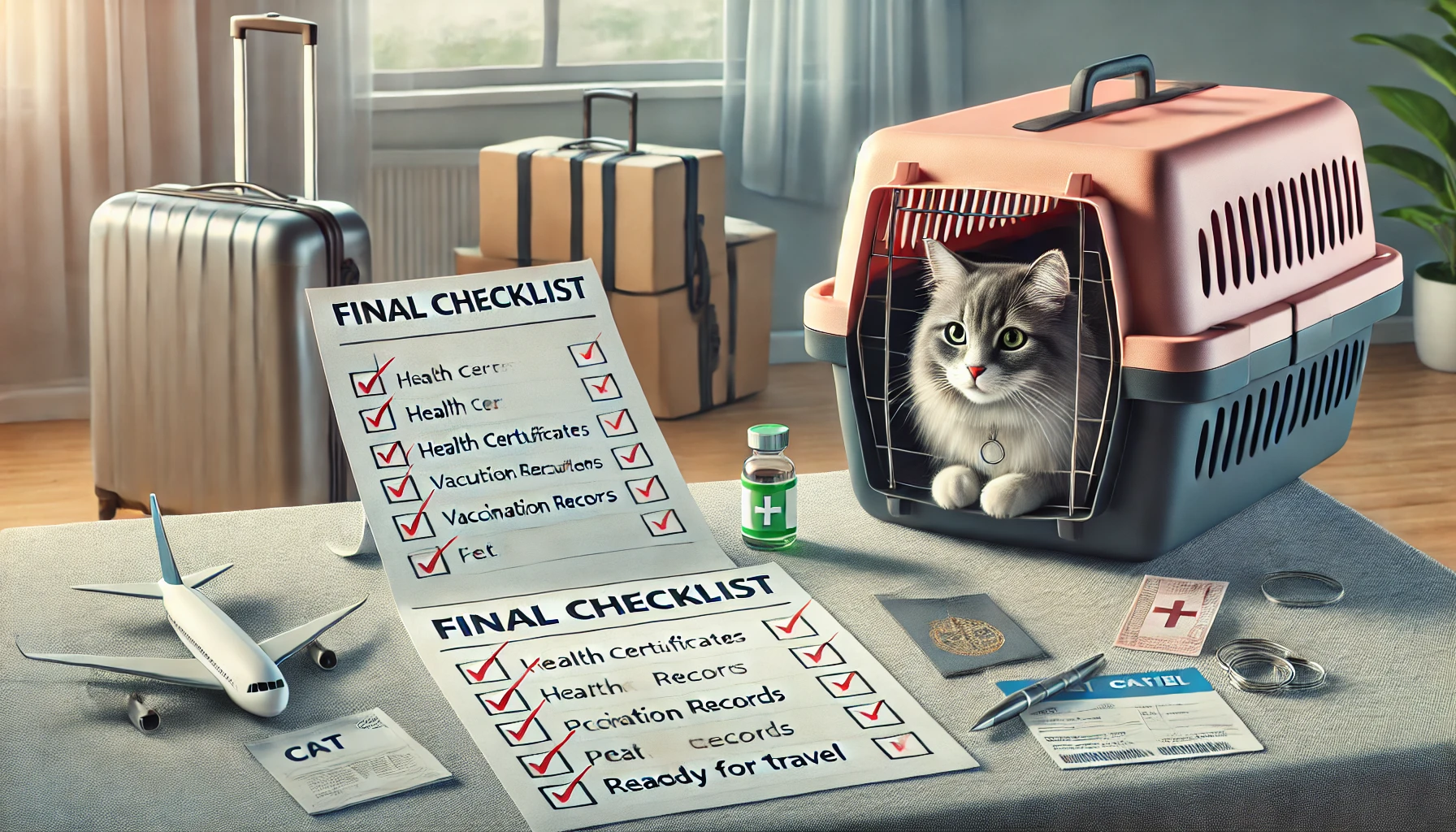
Final Checklist for Cat Travel
Before you leave, double-check that you have all the required cat travel documents:
- Health certificate (most recent, dated within the required timeframe)
- Vaccination records (especially rabies)
- Microchip information and registration
- Airline-approved pet carrier
- Destination-specific documents, such as import permits or quarantine forms
- Airline pet travel forms submitted in advance
These recommendations, along with ensuring all documents are prepared and organized, will help make your cat’s travel experience as smooth and stress-free as possible.
Proper preparation, research, and organization are key to a successful and enjoyable journey with your feline companion.
Thorough preparation of your cat’s travel documents will ensure a smooth journey, saving time and reducing stress.
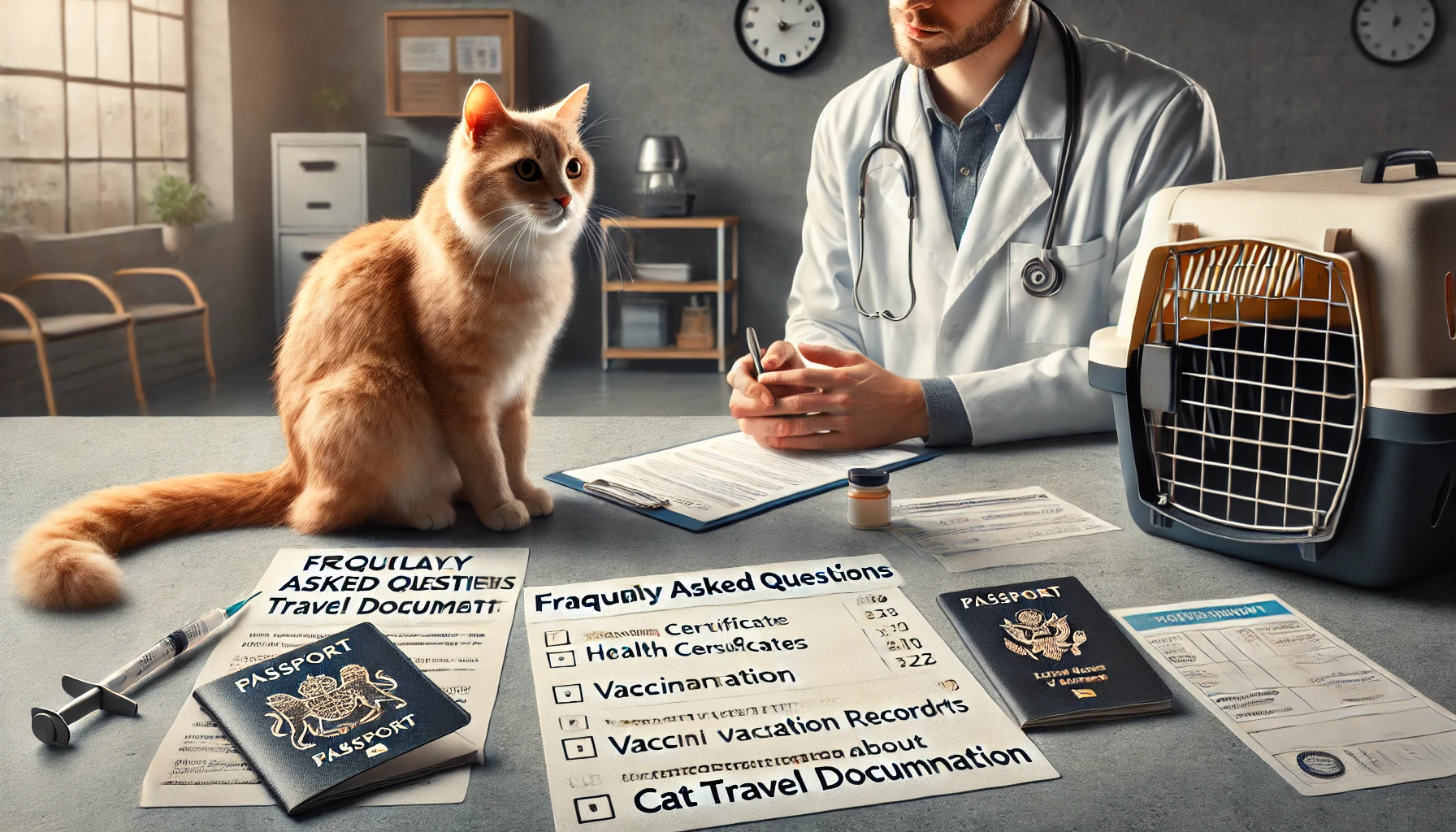
Cat Travel Documents: Frequently Asked Questions
If you are planning to go on a journey with your cat, understanding the requirements for cat travel documents will make the process simpler.
Below are common questions and answers regarding preparation and cat travel documents.
What documents do I need to travel with my cat?
You will typically need a health certificate, vaccination records (especially rabies), a microchip number, and any destination-specific permits.
Requirements may vary depending on the airline and destination, so it’s best to research in advance to ensure compliance.
How far in advance can I get my cat's health certificate?
A health certificate is usually required within 10-14 days of travel.
Check with your destination country and airline to determine if the health certificate will be valid during the time you’ll be traveling.
Must my cat be microchipped for overseas travel?
Yes, most countries require that your cat be microchipped for international travel.
The microchip should be ISO-compliant, and the registration information should be updated before your trip.
Do all countries have quarantine rules for cats?
No, quarantine rules differ by country.
Some, like Australia and New Zealand, have strict quarantine requirements, while others may only require proof of vaccination and a health certificate.
Can my cat travel with me in the cabin?
Some airlines allow cats to travel in the cabin, but there are size and weight restrictions for both the pet and carrier.
It’s best to check with your airline to confirm their pet travel policies in advance.
What vaccinations does a traveling cat require?
The most common vaccination required for traveling cats is rabies.
Other vaccinations, such as Feline Distemper, Calicivirus, and Herpesvirus, may also be recommended or required by your destination.
How do I submit pet travel forms to the airline?
Many airlines require that pet travel forms be submitted 48 to 72 hours before your flight.
Ensure all relevant information is correctly provided, and carry copies of the submitted forms with you during travel.
What should I do if my cat's vaccinations have expired?
If your cat’s vaccinations have expired, they must be updated.
Consult your veterinarian, as some vaccines require a waiting period before they are considered valid for travel.
What happens if my cat's documents do not match?
If your cat’s travel documents don’t match or are incomplete, this may lead to delays or denial of entry to your destination.
Ensure all cat travel documents are accurate and up-to-date.

